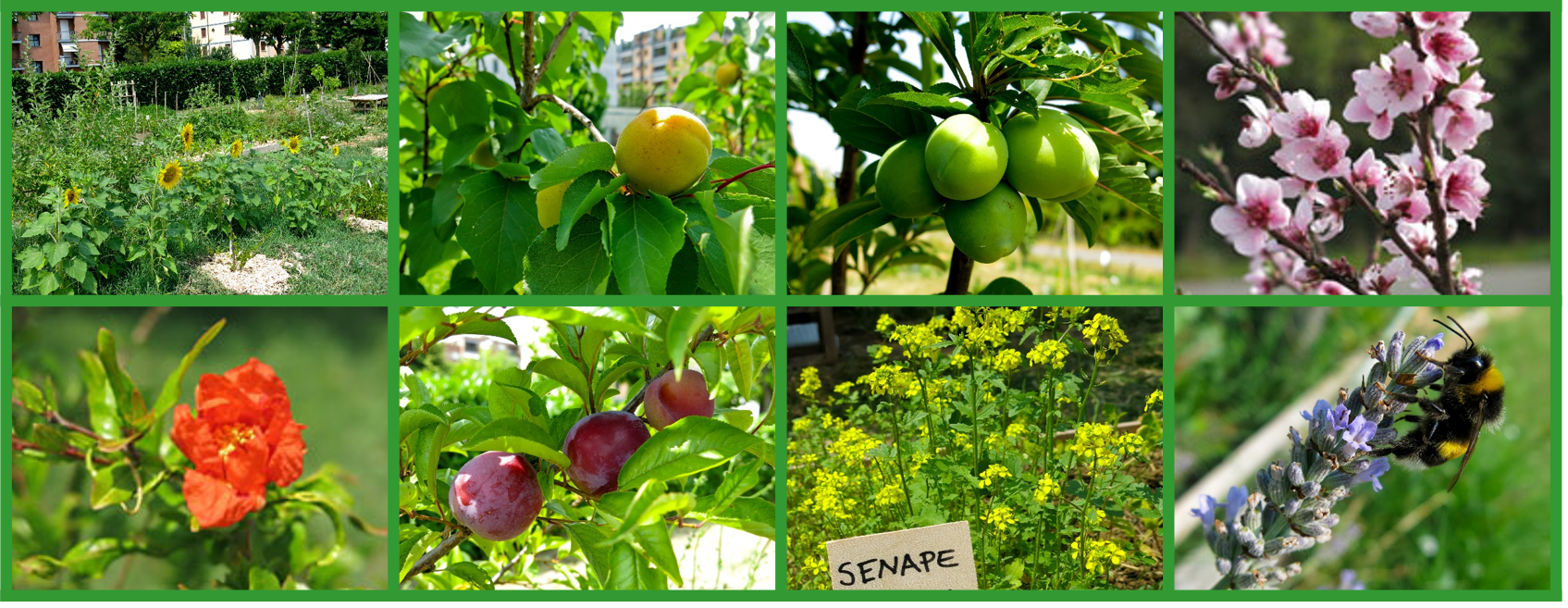
FRUTTORTI DI PARMA
Orti e frutteti condivisi nei quartieri cittadini

The Picasso Food Forest
- The project: What is a food forest?
- Site characterization: Climate zone, Solar Radiation Analysis, Wind analysis, Zone analysis
- Soil preparation and improvement: Soil texture , PH , Micro and macro nutrients input, Mulching, Nitrogen-fixing, Irrigation
- Planting: 1) Canopy layer, 2) Small trees, 3) Shrubs, 4) Herbaceous layer, 5) Groundcover layer, 6) Underground layer, 7) Climbing layer
- Biodiversity and complete list of species
- Detailed map
- Raised-beds and other experiments
- Publications and bibliography
The project

Fruttorti di Parma takes inspiration from agro-ecology, agroforestry and permaculture, a design approach for creating sustainable human settlements by imitating natural systems.
The Picasso Food Forest is the first experimental site of a public urban food forest in Parma, and maybe in Italy. Started in December 2012, the project provides a public food forest whose fruits are available to the inhabitants of Parma. A “public park”, to use more common terms, in which trees and plants do not only provide aesthetic functions, shade and oxygen but will also provide food for the people living in the urban context and wildlife habitat. The people visiting will be able to follow the evolution of this small ecosystem along the years and along the seasons. They will see the young trees and the entire forest mature along the years and the plants developing sprouts, leaves, flowers, fruits and seeds along the seasons.
In this page we will try to illustrate the development of the project and of the ecosystem, successes and failures of our experimental trials, hoping we will provide useful information and inspiration to all those that are interested in knowing more, follow us and start with similar initiatives in their neighborhood or city.
All the pictures included in this page are strictly taken from the Picasso Food Forest.
What is a food forest?
If we take a moment to observe nature we realize that a woodland doesn’t require artificial interventions to remain flourishing. It doesn’t require irrigation, fertilization, ploughing, herbicides and pesticides. Natural processes and cycles maintain the soil fertility and the health of the plants. By imitating these processes and inserting in the ecosystems plants that are useful to humans it is possible to create food production systems that require a lot less resources than those currently required by industrial agriculture, contributing to the improvement of the soil and the habitat rather than causing their erosion and destruction.
A food forest attempts to imitate natural processes and functions typical of an immature woodland ecosystem. While a mature forest is made up mainly by big trees and a closed canopy that leaves little light penetration, an immature woodland is characterized by trees of different size and height, shrubs, herbaceous plants and areas with different levels of shade and light, offering a wide variety of ecological niches and high productivity.
Fruttorti di Parma wants to create an urban network of food forests in which plants will provide food to the inhabitants of the neighbourhoods and at the same time offer a habitat similar to the natural one in which natural processes will take care of the needs of the entire system.
The first experimental site was thus born in Via Marconi on a public green area in the south east of the city of Parma in the Picasso neighbourhood.
Site characterization
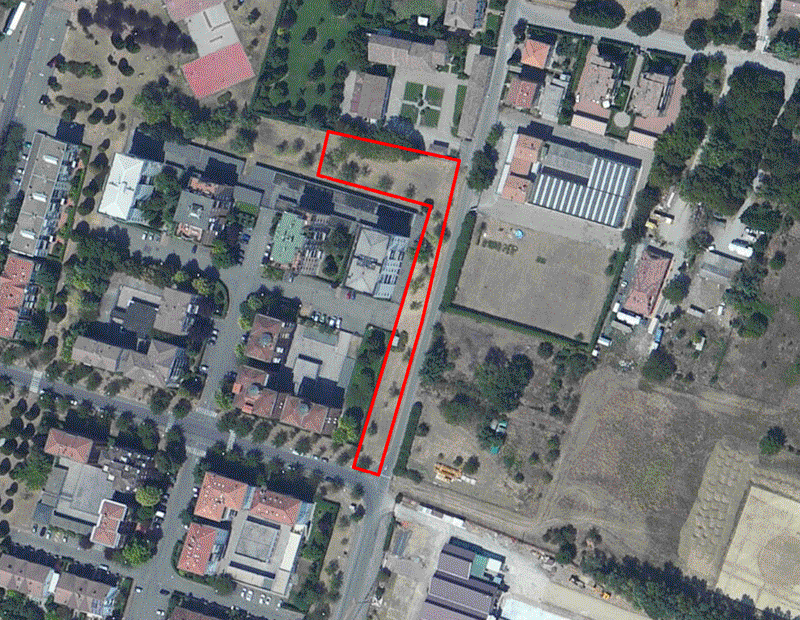
The site covers an area of approximately 5700 m2 and is spread over two rectangles arranged in an L shape, a shape that places some limitations on the design of the planting, particularly on the narrower side.
The west side is delimited by a Lauro ceraso edge and a concrete and metal fence from the bordering apartment lots. The east side is delimited by a water run-off channel that separates the green area from the adjacent small one way sealed road (Via Marconi). On the south side we have a concrete footpath and on the North side a metal net fence behind which four tall walnuts trees grow.
The area is essentially flat and it’s located at sea level.
The climate zone corresponds to zone 8 of the USDA classification characterized by hot summers and cold and rainy winters. In recent years, extreme rainfall and drought events in unusual periods seem to occur more frequently, an aspect linked to ongoing climate change.

The results of a solar radiation analysis performed with a GIS software are displayed in the following maps. Average seasonal as well as monthly maps were produced. The analysis, that took into consideration also the shadowing caused by surrounding buildings and other features, shows that the area receives a considerable amount of direct sunshine during the year with the exception of the zone situated on the North side in winter where the soil receives less than 3 hours sunshine due to shadowing from tall buildings.
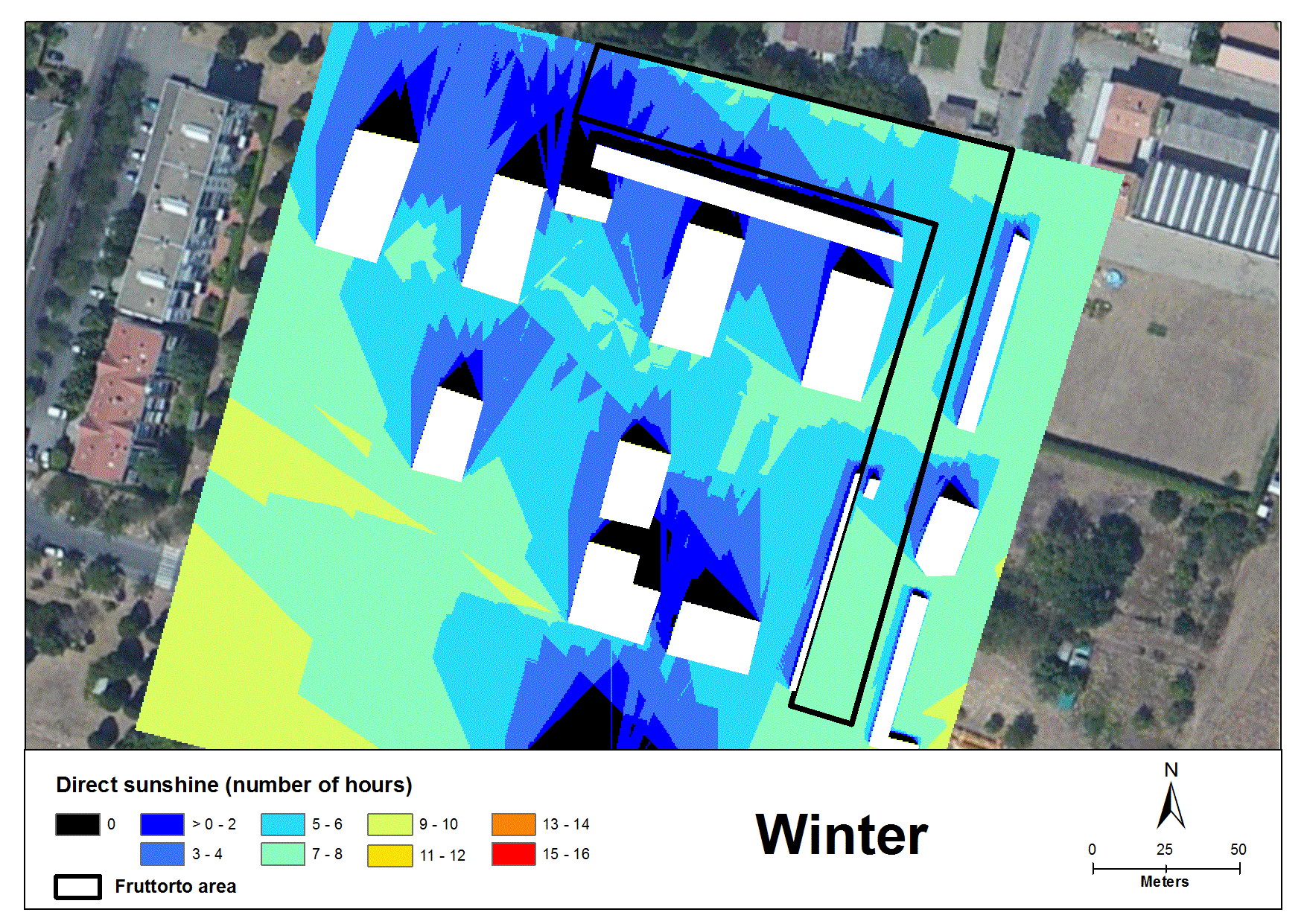
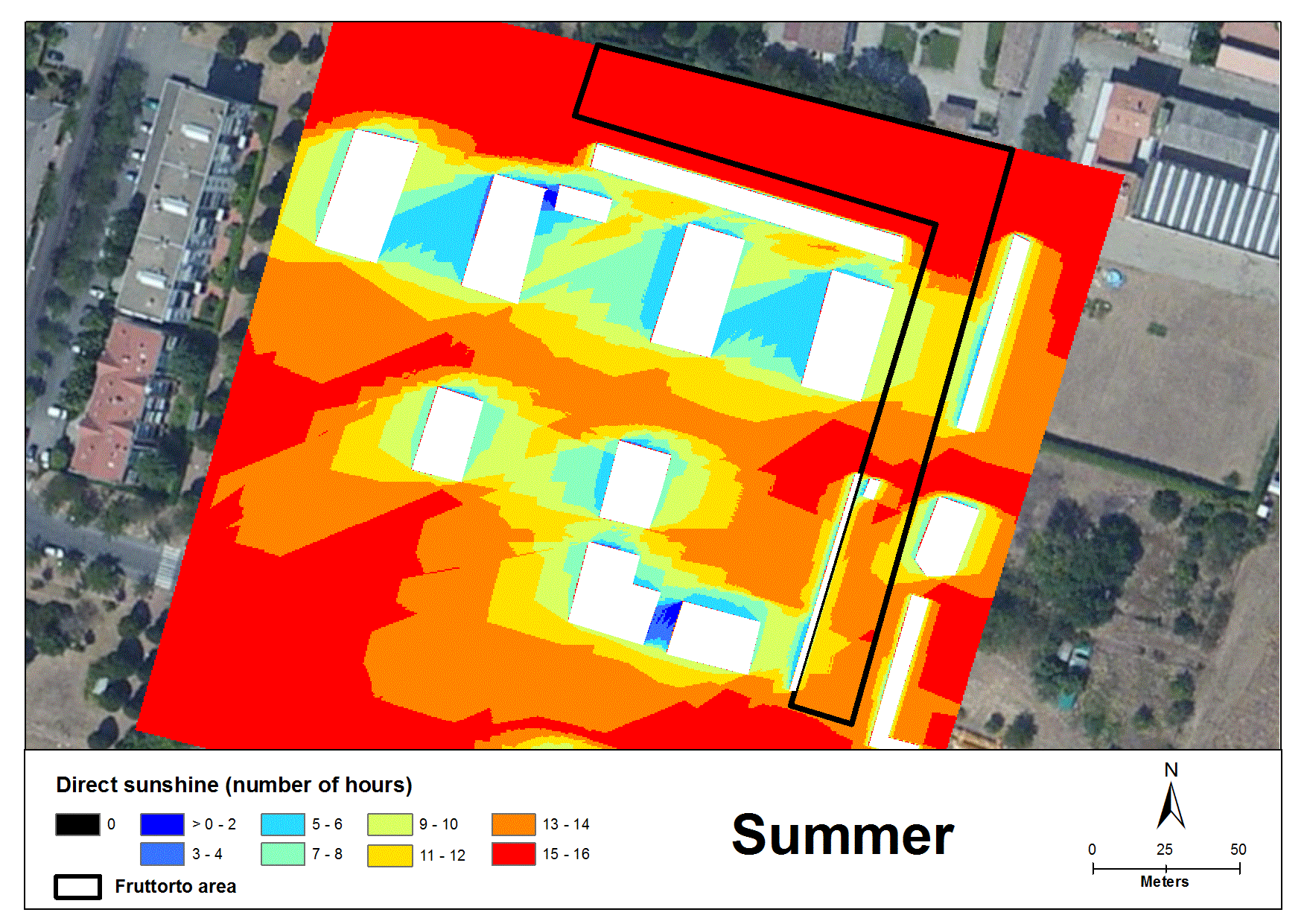
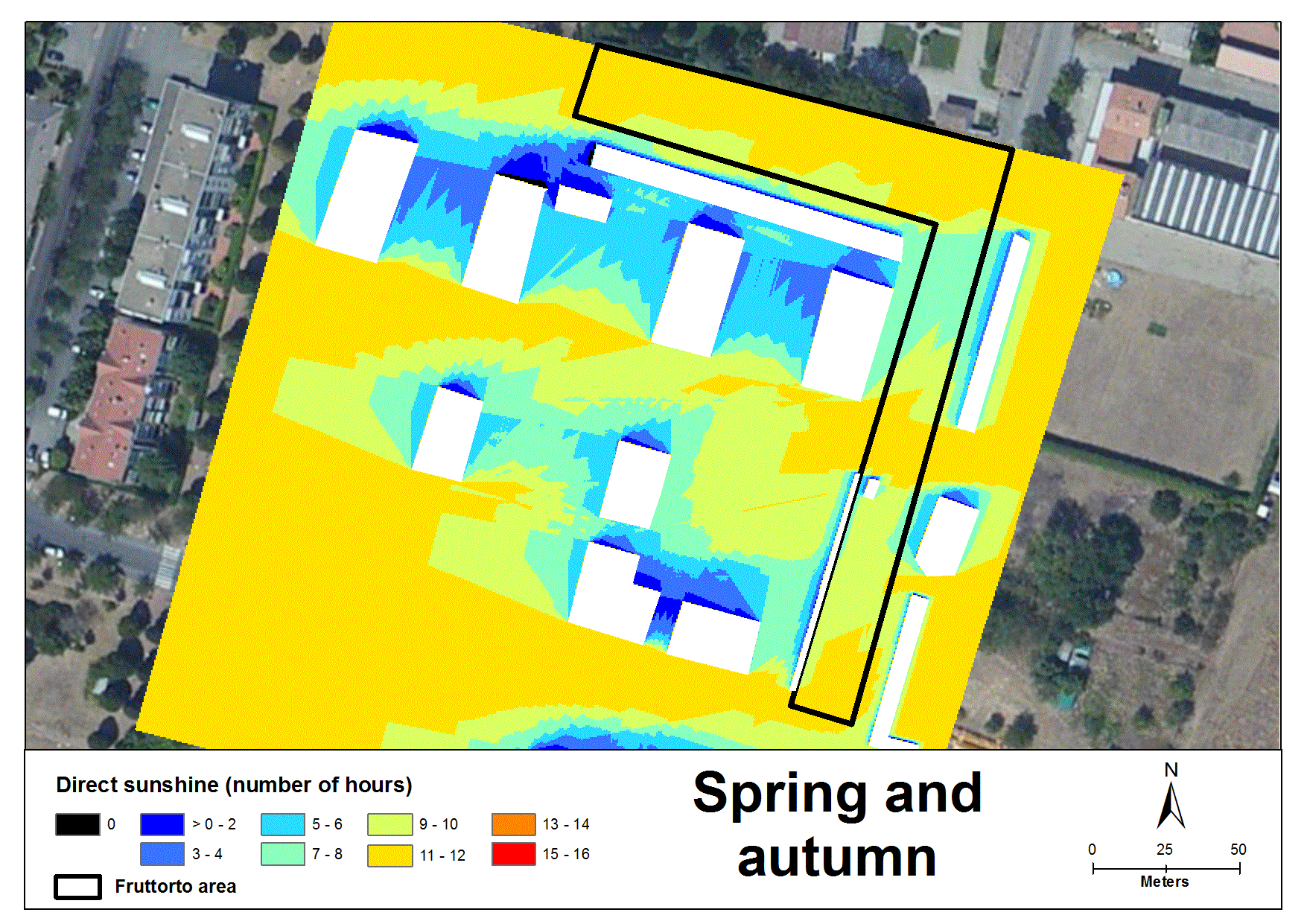
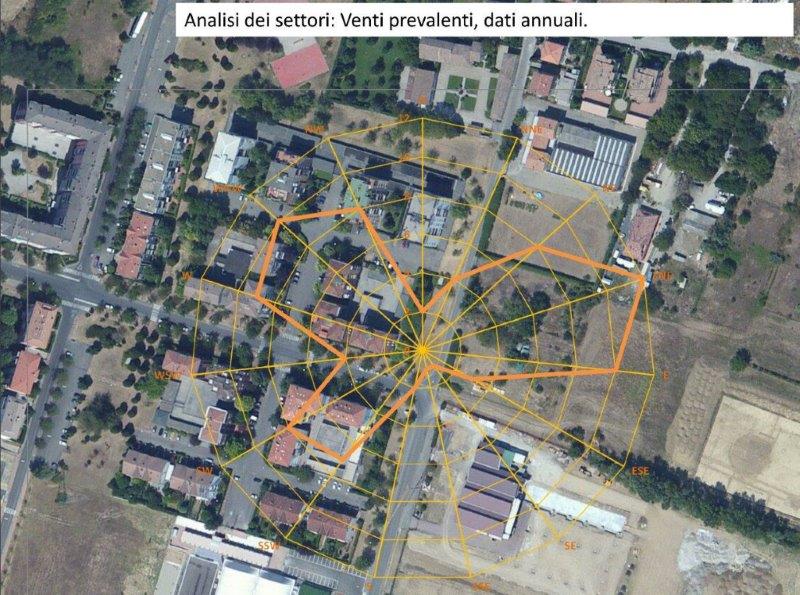
Parma is not a particularly windy area. Also being in an urban context the area is relatively protected by strong winds but still it experiences some wind gust during windy days thus some thought is being put in the identification of places where wind barriers could be useful, although none has been put into place yet.
Wind distribution data were obtained from the meteorological station of Parma airport (about 9 km away). A windrose was overlaid to the map of the site to identify the prevailing winds. The analysis was made with monthly and yearly data.
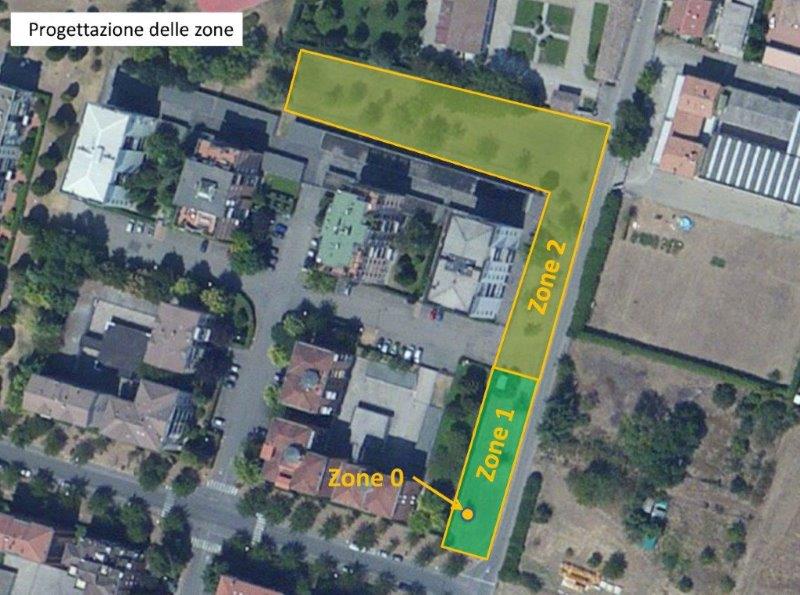
The map on the side shows the area divided into zones according to the zone analysis approach of permaculture.
Zone 0 is the place where people meet, there are chairs and shade.
Zone 1 is the area most intensively designed and managed, where the development of the herbaceous and ground covering layer has already started, extended mulching is taking place to improve soil fertility and some raised bed were built to experiment on some annual root, starch and protein rich crops.
Zone 2 is less attended and managed and only the tree and shrub layers are currently being put into place.
Soil preparation and improvement
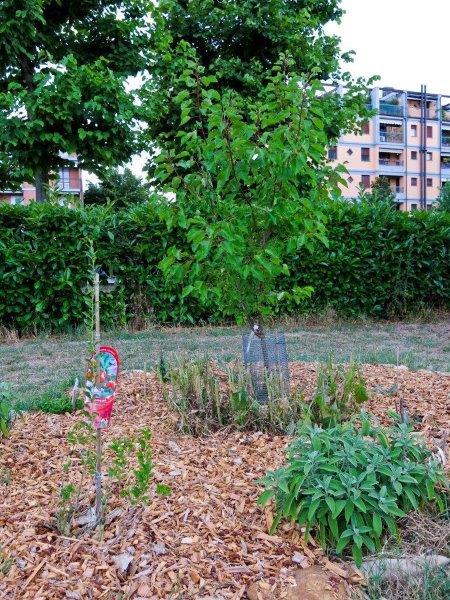
The project was started in a public green area made of grass mowed a few times a year. The soil seemed compacted (grass was dominated by plants indicating a compact soil such as Plantago and Rumex spp.) and it contains some left over material from the building operations of the nearby apartment blocks (bricks, tiles). The area is located at the edge between the urban sprawl and the area once dedicated to agricultural use, and it is characterized by a soil typical of the lands of the Po River Plain.
The initial planting was made without soil preparation.

It was performed by mixing half a cup of soil collected at 5cm depth with a cup of water and left to decant for 1 minute and for 48 hours. The layer deposited after one minute, considered sand, made up 21% of the soil composition. After 48 hours additional three layers were identified, one was attributed to loam (50%) and the other two to clay (29%), although it was unclear were to mark the boundary between loam and clay.
The soil was classified as “clay-loam” based on the USGS soil classification.
PH was measured by submerging for a few seconds a litmus strip (0.1 accuracy) in the aqueous solution obtained by mixing half a cup of soil collected at 5cm depth with an equal amount of distilled water and left to decant for a few minutes. The measured PH was between 6.5 and 7.
Micro and macro nutrient input
There is an important input of nutrients from the outside in the form of dog urines as the area is a popular place for dog walking but a quantitative estimate as not been done to compare for example with the amounts suggested by Martin Crawford in his book “Creating a Forest Garden”.
While observing nature we can easily notice that the soil is hardly ever left uncovered (with the exception of deserts and places where disastrous idrogeological events have recently occurred). Soil that is uncovered is subject to erosion, compaction, droughts and frost. To avoid this negative situation the soil should always be covered by vegetation or, as an alternative, by some sort of mulch.
Mulching is an operation that consists in covering the soil with a series (one or more) layers of organic matter (straw, wood chips, leaves, cardboard, grass clippings) to:
- protect the soil from water evaporation in summer and from winter frost;
- protect the soil from the erosive and compaction action of the rain;
- enrich it in organic matter thank to the break down of the mulch;
- keep under control the growth of spontaneous plants by blocking light;
For these reasons, mulching through the addition of organic material such as straw and leaves is used extensively in the food forest. Since the food forest aims to be as self-sufficient a system as possible, potential sources of organic material in situ have been identified. One source, available in autumn, is represented by the leaves of the maples that were already present on the site or those collected in the neighborhood
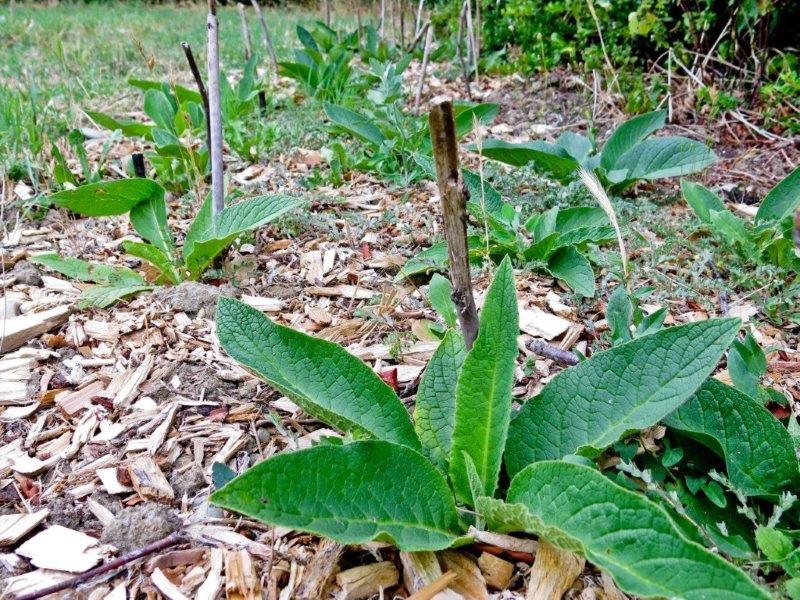
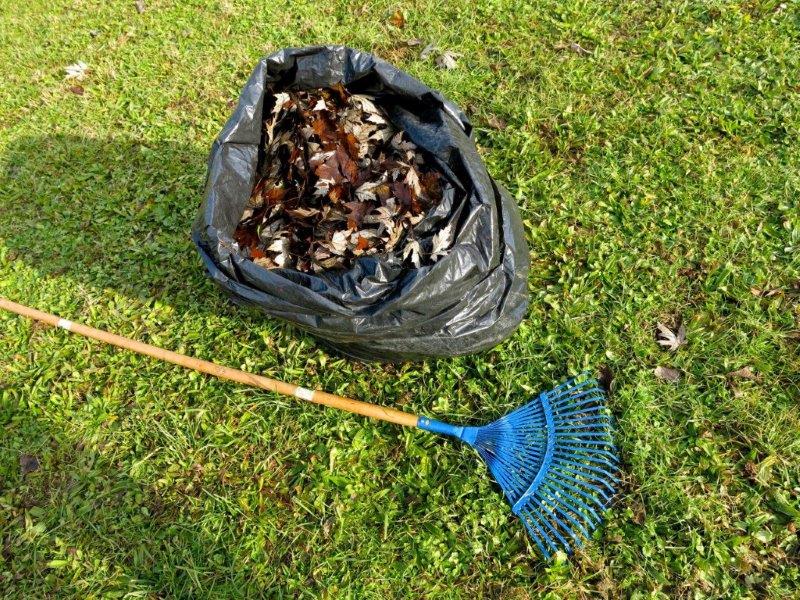


From left to right: 1) Comfrey (Symphytum officinale), 2) Fall leaves harvest, 3) Mulching with straw, 4) Mulching with wood chips
Talking about self-sufficient systems we cannot avoid to speak about plants that contribute to fixate nitrogen from the atmosphere.
These plants contain, in nodules in their roots, symbiotic bacteria called Rhizobia that fix the nitrogen in the atmosphere and provide to the plants needed nitrogen compounds. The green material obtained from the plant will then contain nitrogen that can be returned to the soil and contribute to its fertility (e.g. in the form of mulch). It is important to introduce a sufficient number of plants in a productive system such as a food forest to have available a natural and free source of nitrogen.
As the urban context doesn’t allow the introduction of tall trees for nitrogen fixation, smaller shrubs are being introduced in the Picasso Food Forest such as sea buckthorn, goumi and Siberian Pea tree that also provide edible fruits and seeds. These perennial plants are then complemented by annual beans such as broad beans, chickpeas, peas and running beans that seem to do well when seeded around trees with not much soil preparation or follow up care.
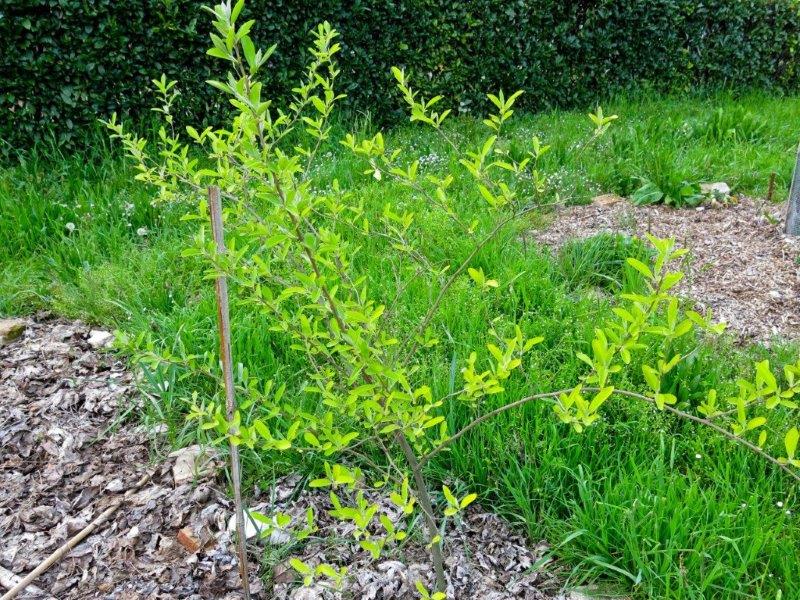
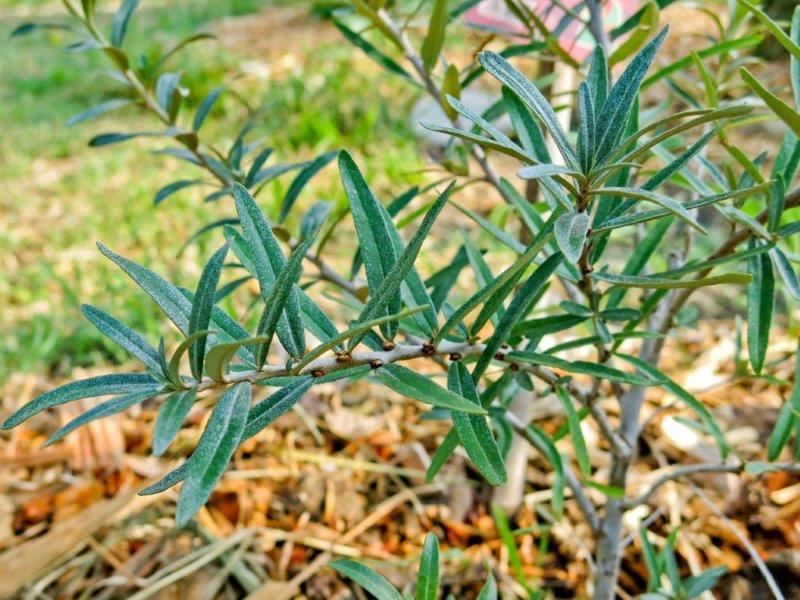
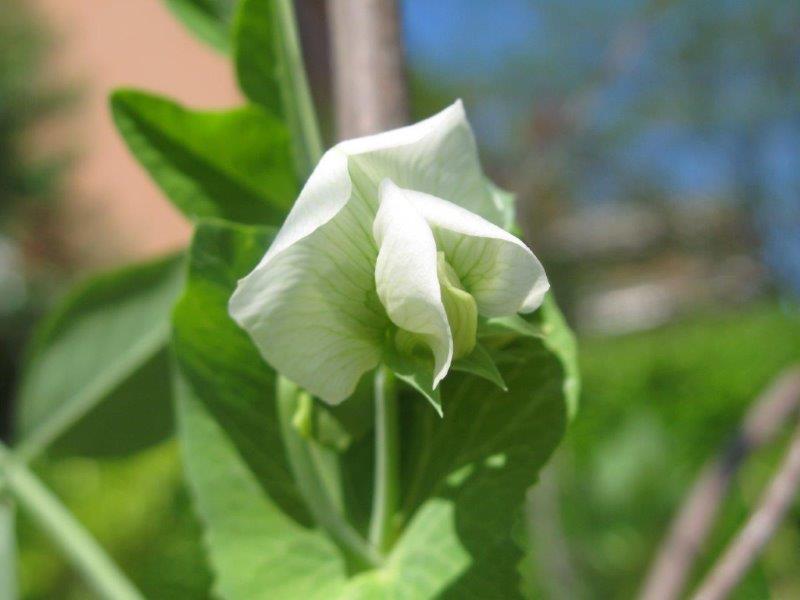
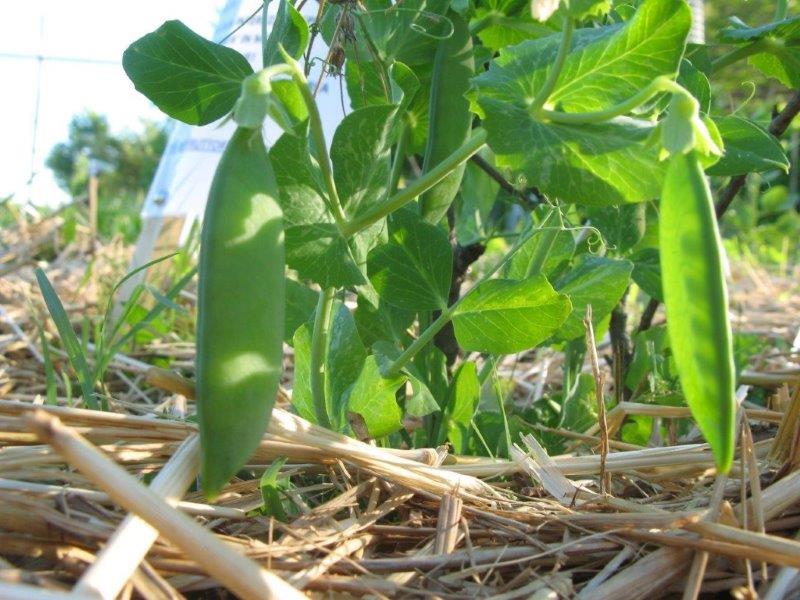
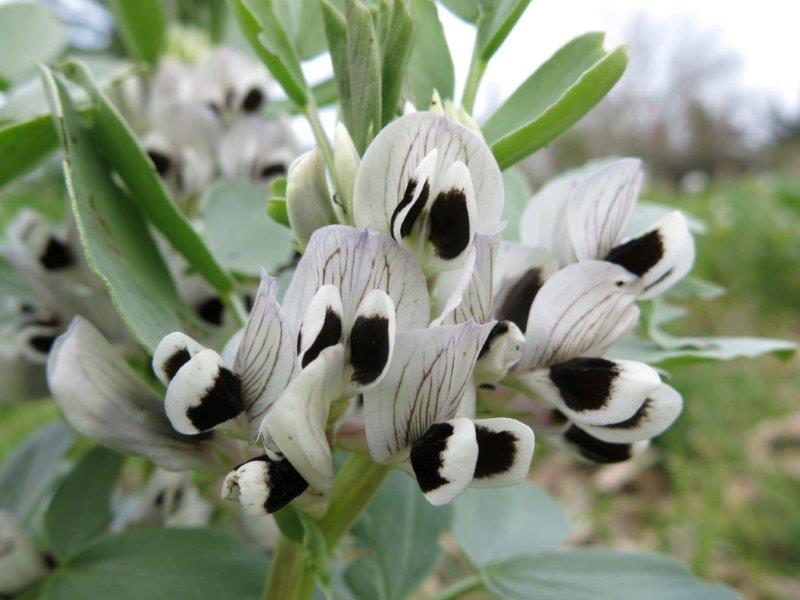
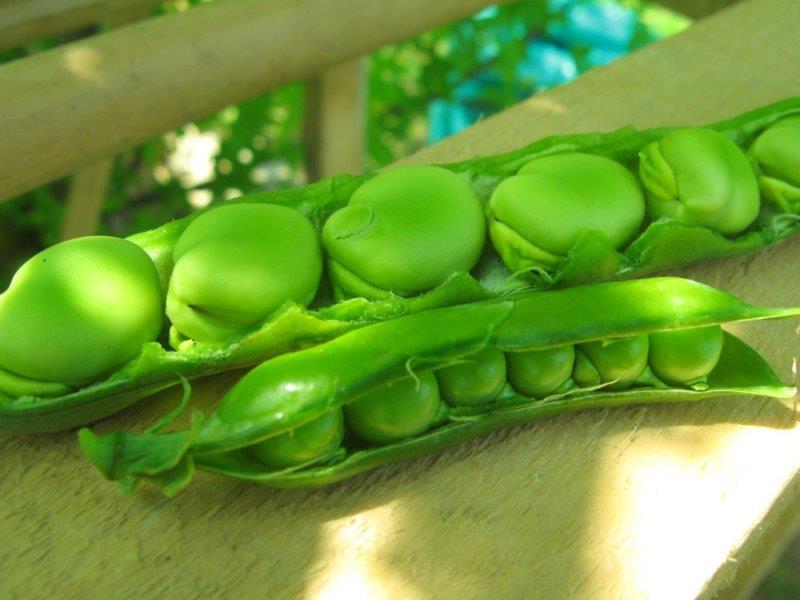


From left to right: 1) Goumi (Elaeagnus multiflora), 2) Sea buckthorn (Hippophae rhamnoides), 3) Pea flowers, 4) Pea pods, 5) Broad beans flowers, 6) Broad beans and peas, 7) Siberian Pea Tree, 8) Chickpea pods
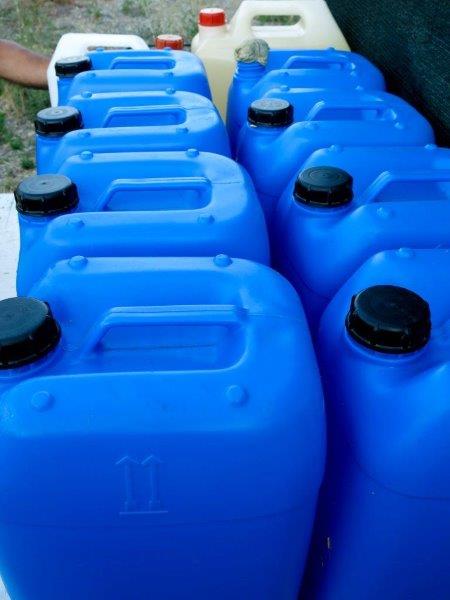
Since August 2022 the area has a mixed automatic irrigation system (sprinklers and drip system).
In the first four years of the project's life there was no water supply and irrigation took place through the manual supply of water (tanks), then until 2022 through the manual use of a water hose according to the following indicative quantities:
- Approximately 30 liters per week for trees and 15 for shrubs in the first year after planting distributed in two/three irrigation shifts.
- About 10-15 liters per week for trees and 5 liters for shrubs in the second year after planting.
In the year 2023 there was a total consumption of water for all uses (irrigation, pond water integration and various uses) of xx cubic metres.
Planting
The following photo sequence shows the evolution of the system and will be kept regularly updated. The yellow star indicates the common reference point in the series (a young fig tree).











At the moment the Picasso Food Forest hosts over 300 different plant species and varieties, and more than 185 trees and shrubs, plus numerous herbaceous plants.
The first planting took place on the 23rd December 2012. Most of the trees and shrubs were planted in the winter 2013 with some additions in the winter 2014. The herbaceous and ground cover layers instead are being constantly updated with new plants and experimental varieties.
Fruit trees and shrubs were mainly planted in autumn and winter by digging a hole slightly bigger than the plants root system. On the bottom of the hole a small amount of mature manure was laid down and covered by dirt. Than the plant was settled and the hole filled with the excavated dirt mixed in equal parts with purchased potting soil. Further information (in Italian)...
The area around the plant was mulched with cardboard and wood chips.
Planting is performed according to the 7 layers (or more) that can be easily identified in a forest system, and with the need to create guilds of herbaceous plants around fruit trees and shrubs.

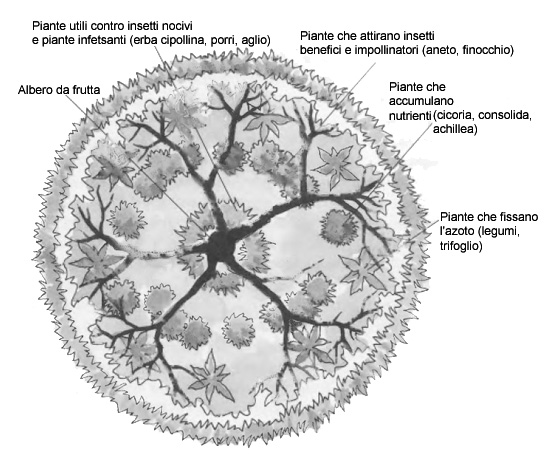

The system is still young and only time will allow us to understand which experiments really work and which need corrections, revision or further development.
Here it follows a detailed description of the plants that have been included in the system so far, grouped by the vegetation layer to which they belong (though many occupy more than one layer).
This layer includes the tallest trees, normally above 9 meters of height although in restricted spaces, such as an urban context, trees in this layer can be smaller. Timber trees, nut trees, and nitrogen-fixing trees are typical of this layer in large forests. In the Picasso Food Forest this layer is populated by the pre-existing 10 Acer saccharinus (4-8 meters tall). Some of the fruit trees grafted on vigorous rootstock will in the future likely become part of this layer such as some of the cherry and apple trees plus a number of volunteering walnuts and prunus trees that have grown in the area.
2) The sub-canopy layer (small trees)
This layer includes trees normally between 3 and 9 meters including most of the fruit trees. In the Picasso Food Forest this layer is populated by apple, apricot, plum, peach, pear, persimmon, figs, pomegranate, jujube and other fruit trees.
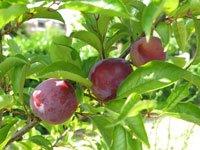
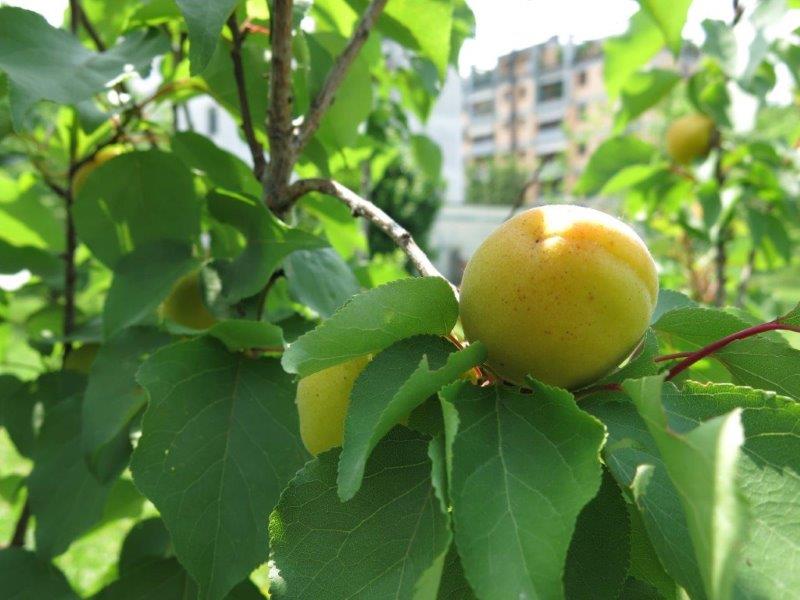
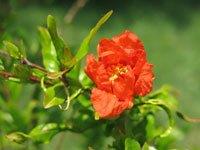
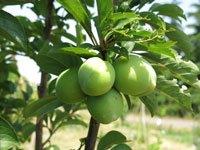


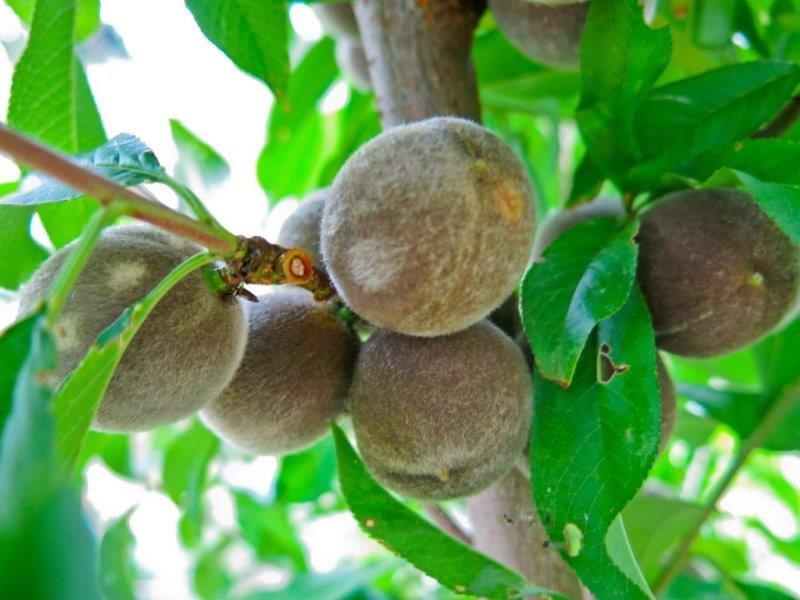
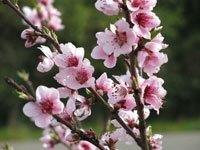
From left to right: 1) Plums, 2) Reale d'Imola Apricot, 3) Pomgranade flower, 4) Grossa Piacentina Plum, 5) Plum flowers, 6) Carla Apple, 7) Sanguignee Peach, 8) Peach flowers
It includes woody plants that can reach up to 3 meters height such as most of the edible fruit shrubs. In the Picasso Food Forest this layer is populated by shrubs of red and blackcurrant, buckthorn, goumi, josta, gooseberry, blackberry, goji berry, chokeberries and raspberry. Goumi, Syberian pea tree and buckthorn shrubs in this layer provide also nitrogen fixation for the food forest.
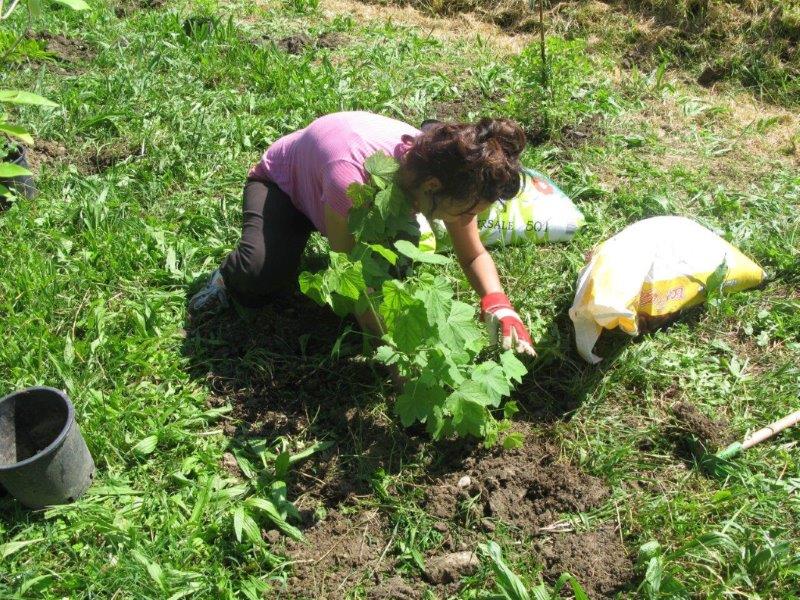
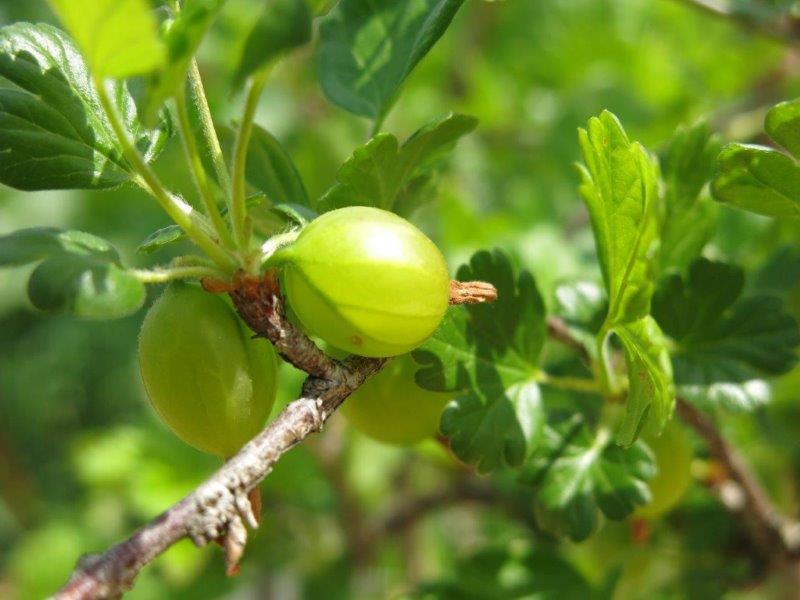
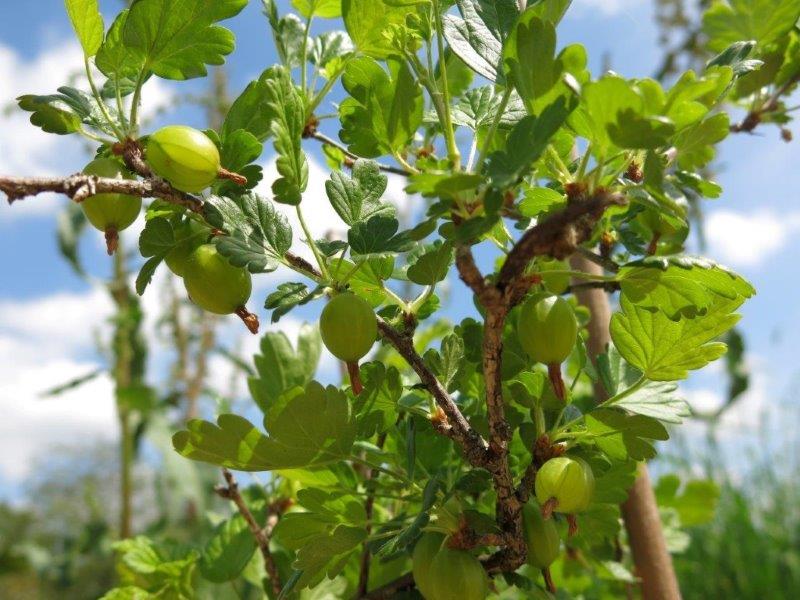
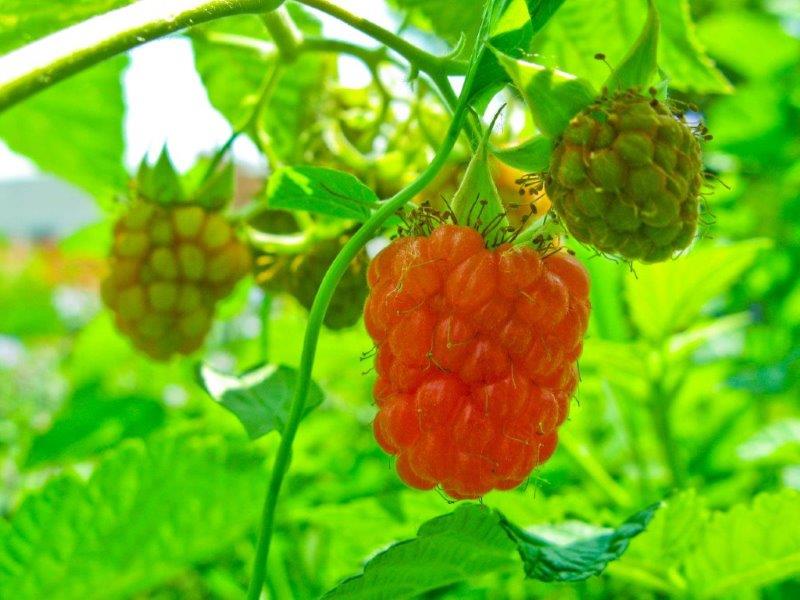
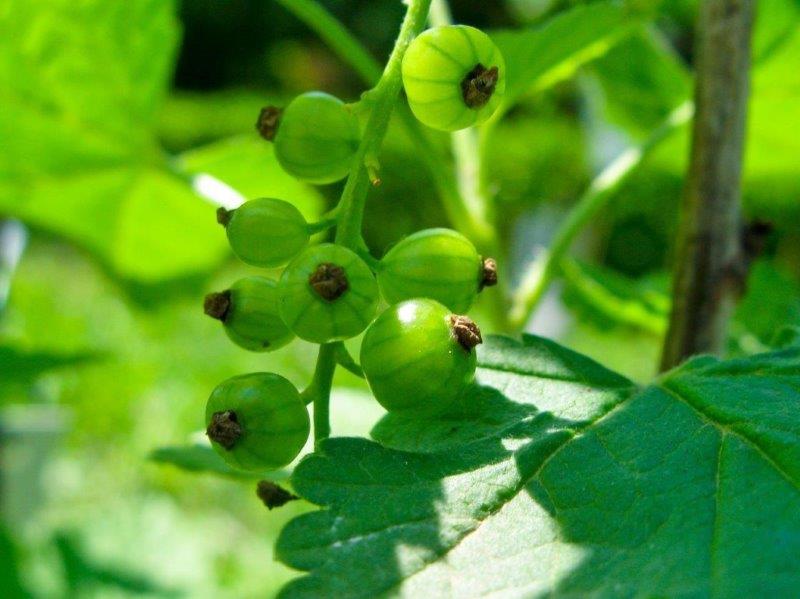
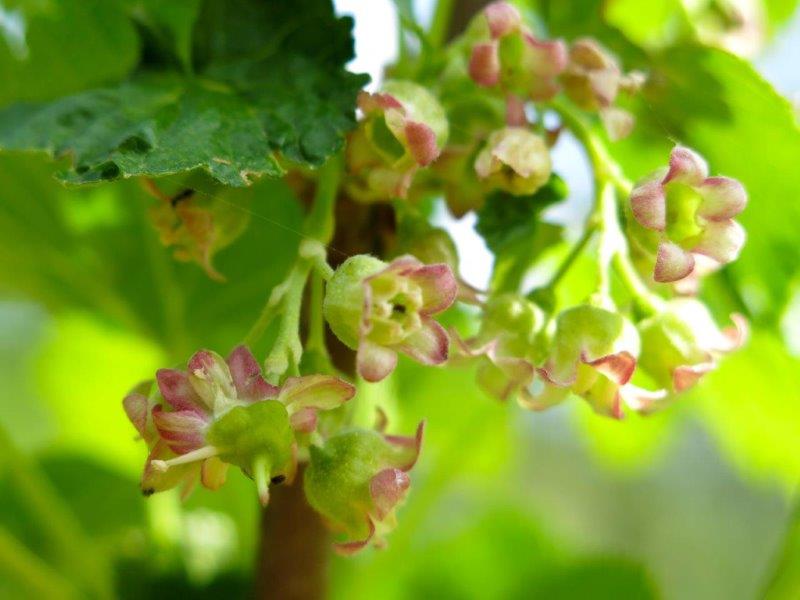

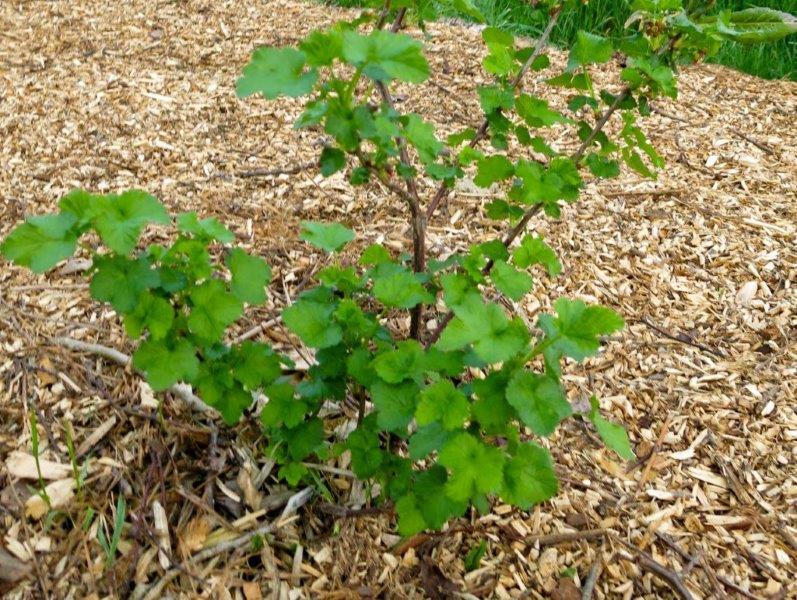
From left to right: 1) Planting fruit shrubs, 2) Gooseberries, 3) Gooseberry shrub, 4) Raspberries, 5) Ribes, 6) Josta flowers, 7) Josta fruits, 8) Josta shrub
It includes probably the most diverse variety of plants in a food forest. In the Picasso Food Forest this layer is populated by aromatic and medicinal herbs some of which may reach an height of 1 meter and above when flowering. Some of them die to the ground in winter and re-grow during the next spring. Some are annual or biennial plants that self seed themselves. We include in this layer also some perennial vegetables such as artichokes and asparaguses as well as some annual vegetable such as beans (broad beans, chickpeas, peas), beets, sunflowers and brassicas (cabbage family). Plants in this layer besides offering edible parts they also provide habitat and food to insects including pollinators.
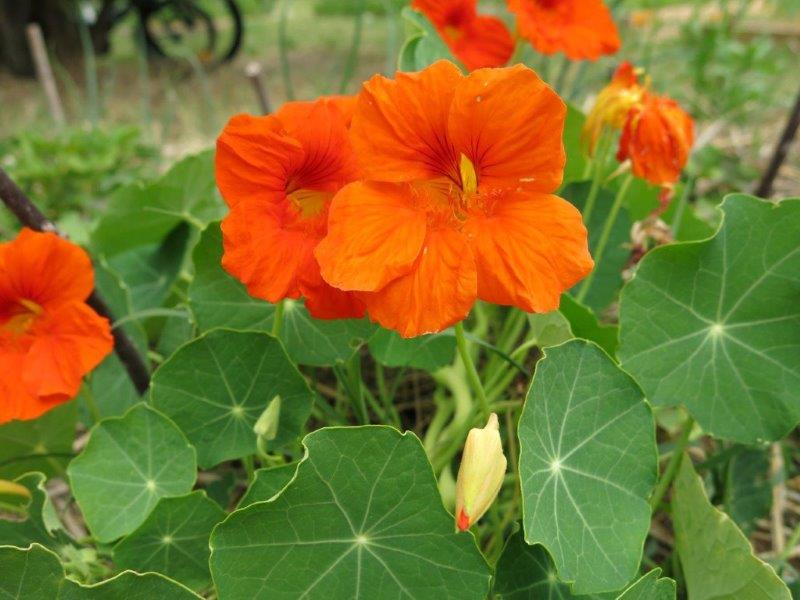
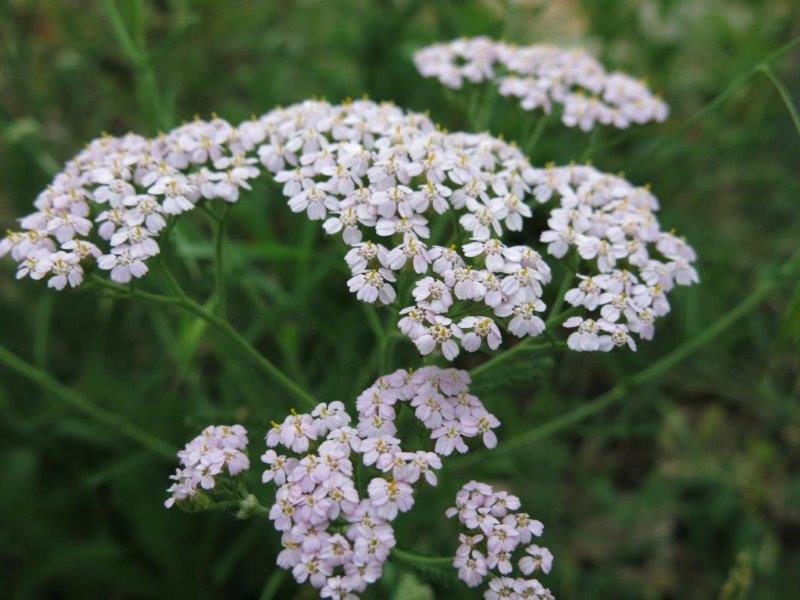
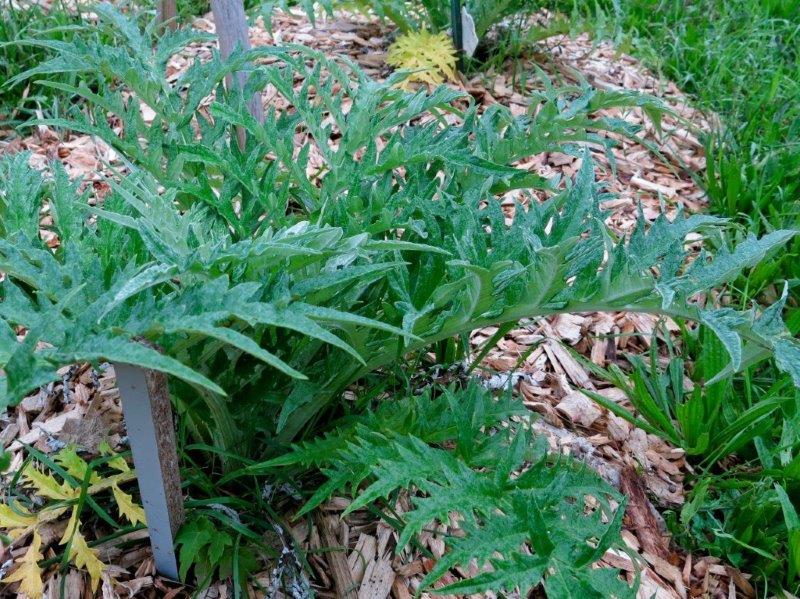
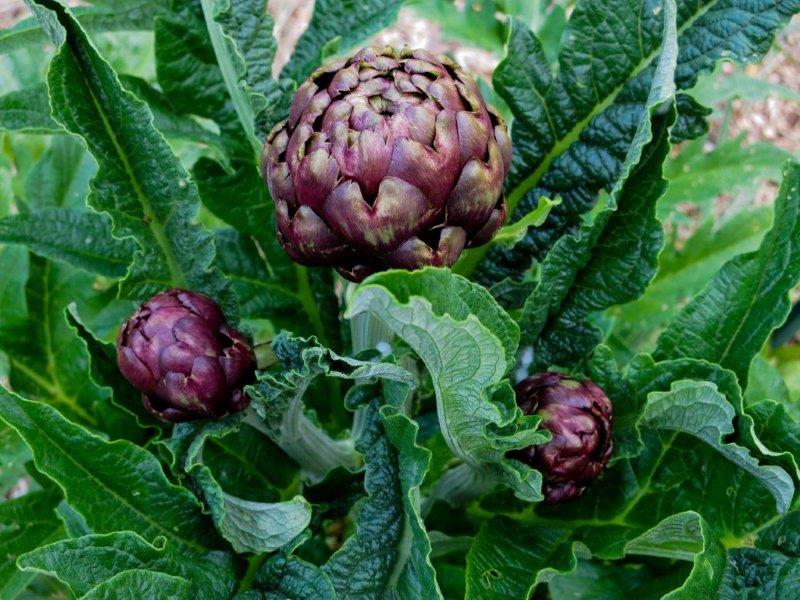

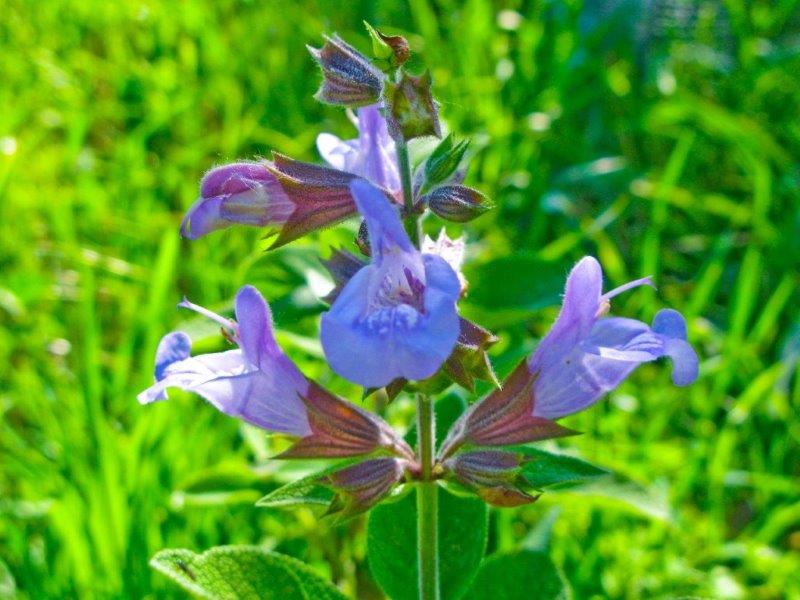

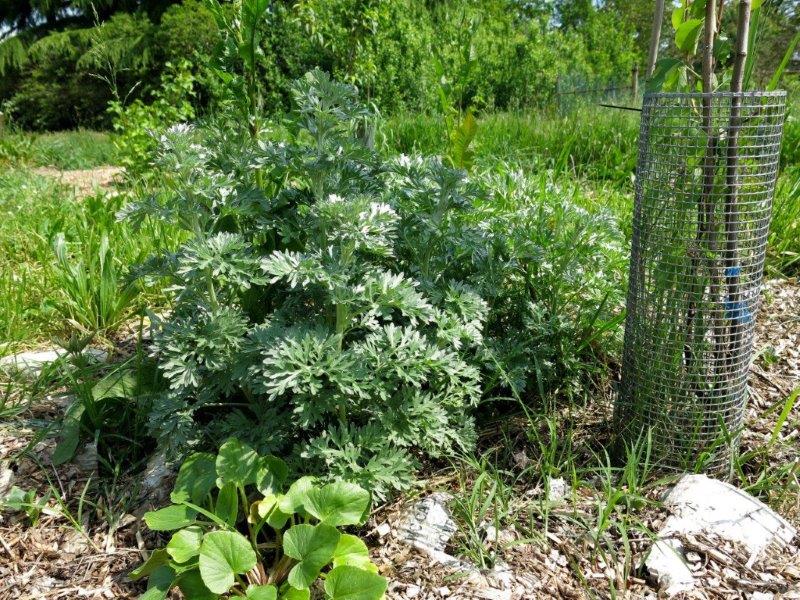
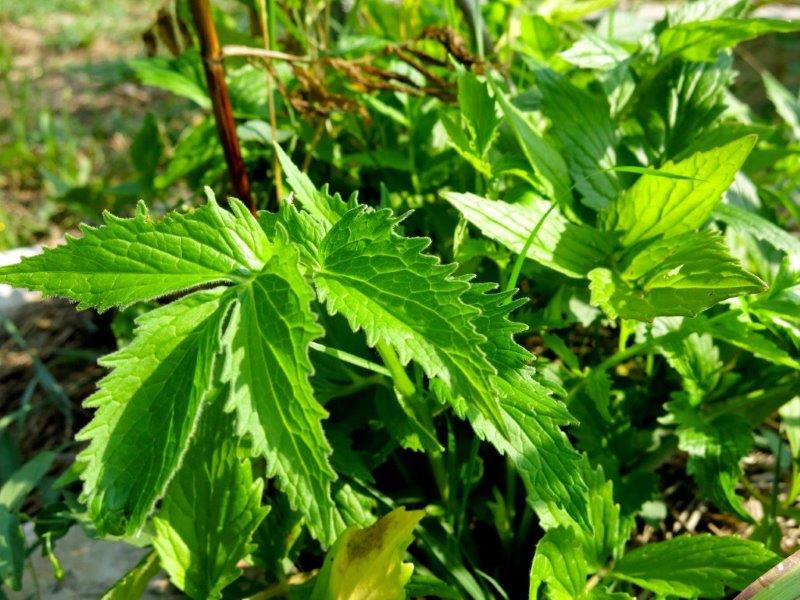
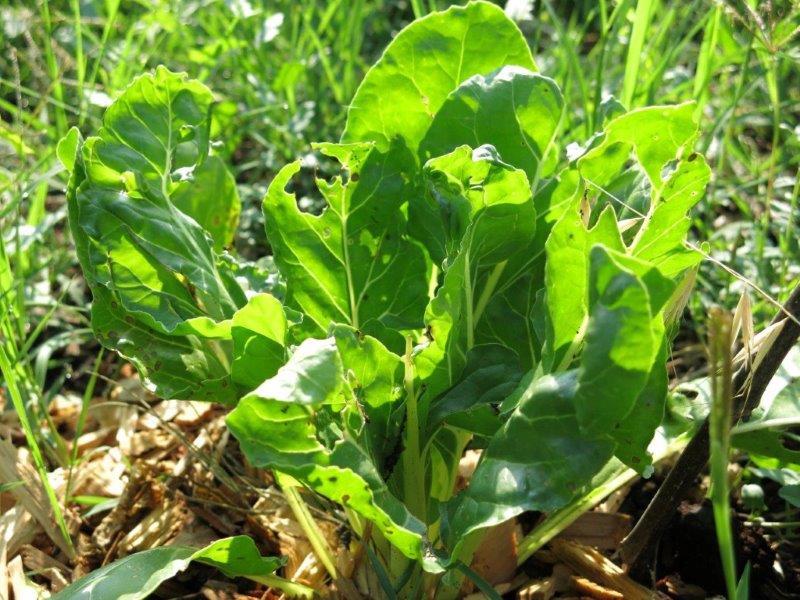
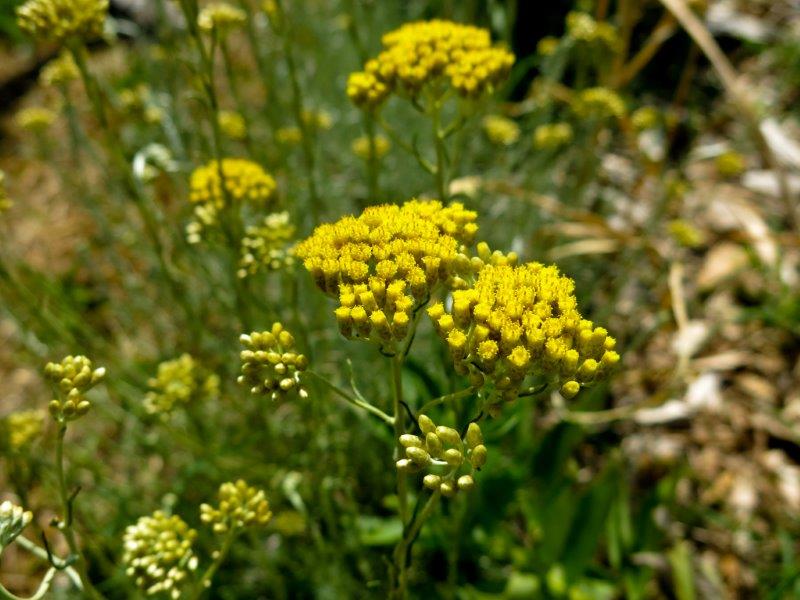
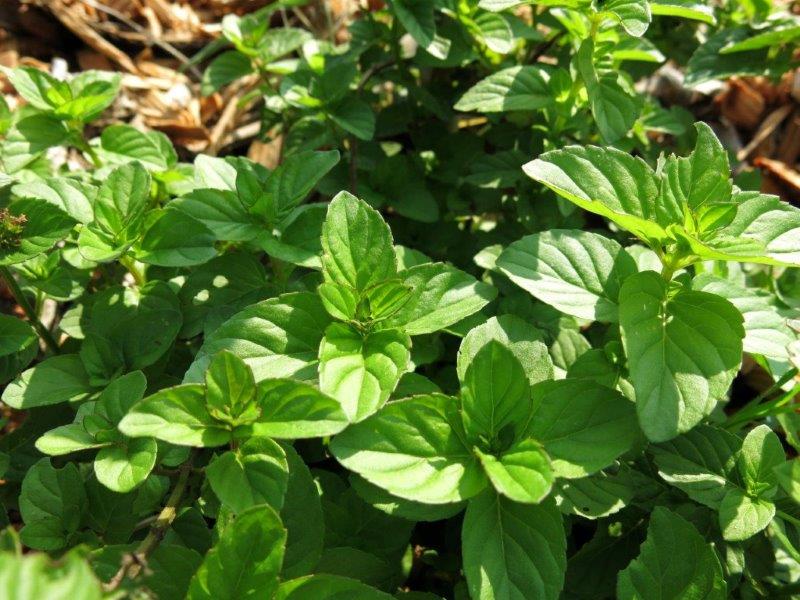
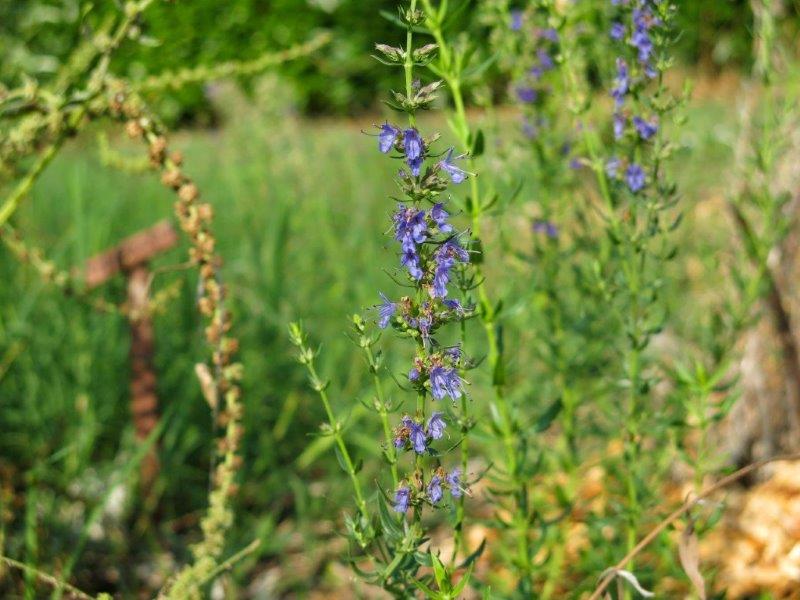
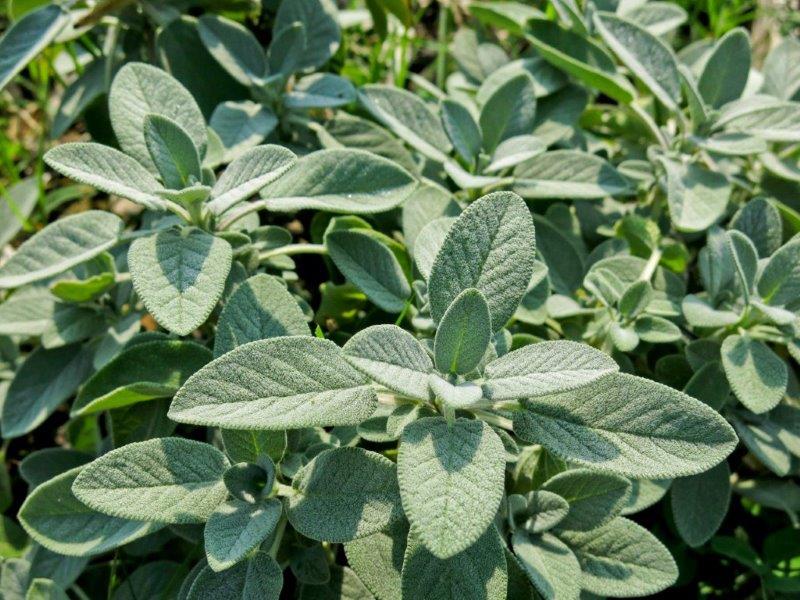
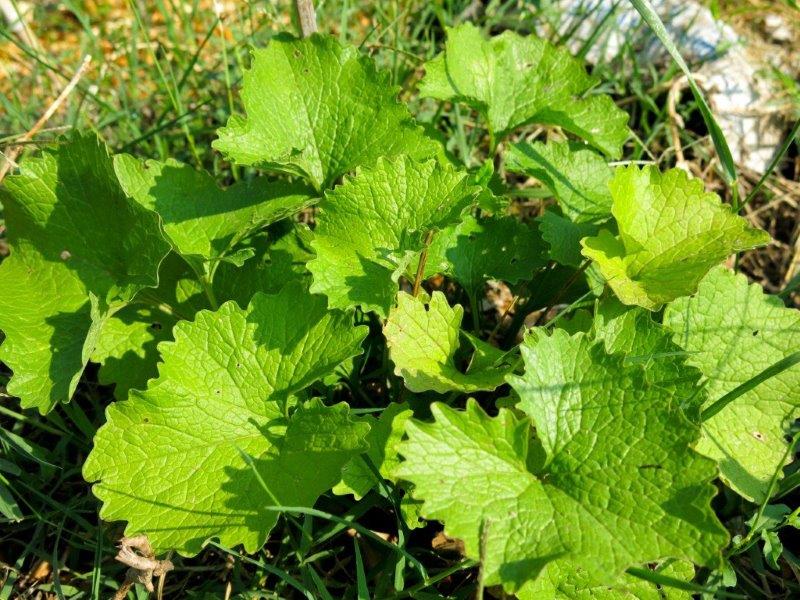
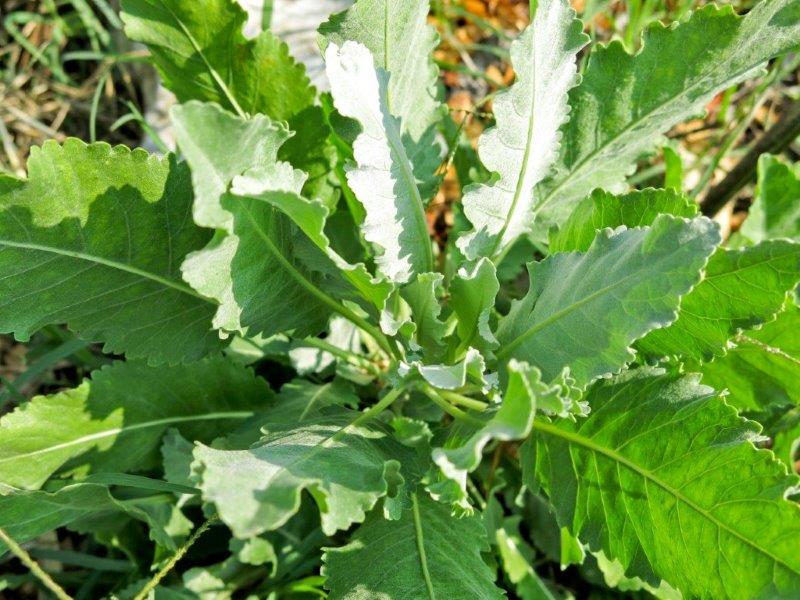
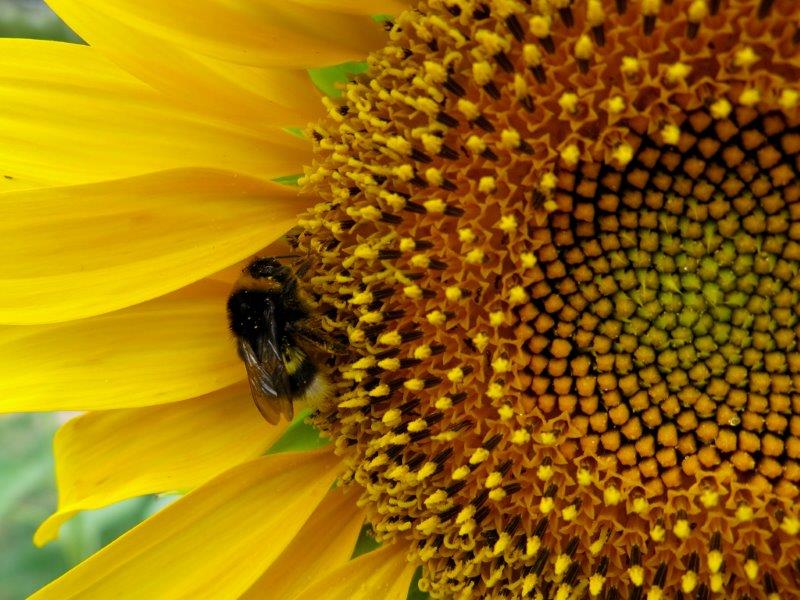
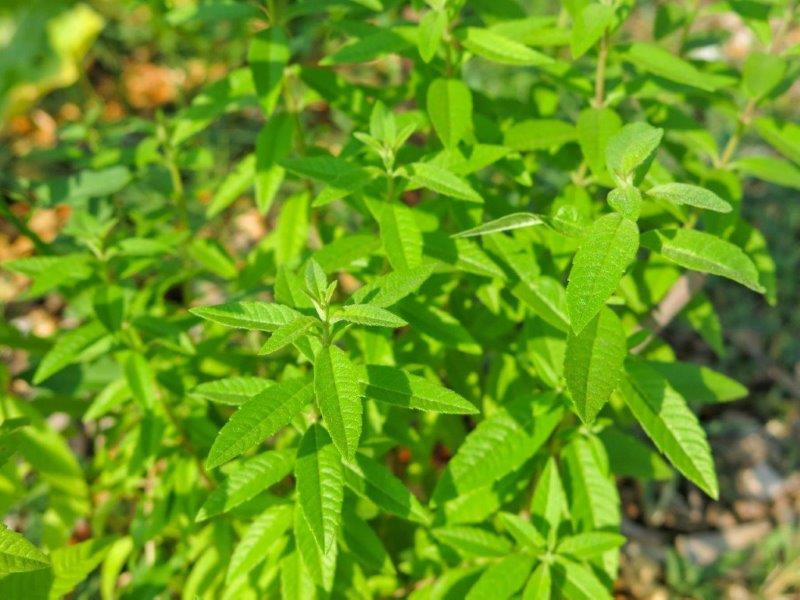
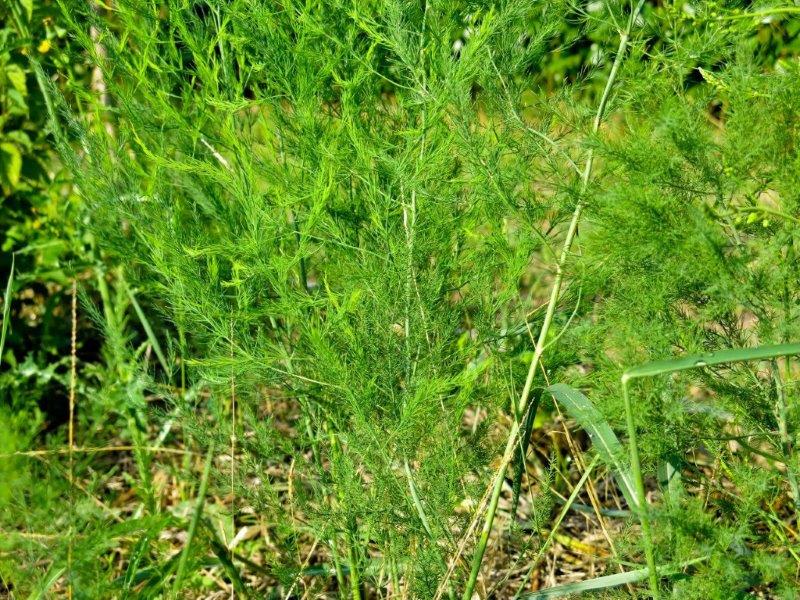

From left to right: 1) Nasturtium flowers (Tropaeolum majus), 2) Yarrow flowers (Achillea millefolium), 3) Artichoke plant (Cynara cardunculus), 4) Artichokes, 5) Borage flowers (Borago officinalis), 6) Sage flowers, 7) Marigold flower, 8) Absinthe (Artemisia absinthium), 9) Valerian, 10) Beet, 11) Helichrysum, 12) Mint, 13) Hyssop, 14) Sage, 15) Garlic mustard (Alliara Petiolata), 16) Balsam herb (Tanacetum balsamita), 17) Sunflower, 18) Lemon beebrush (Lippia citrodora), 19) Asparagus, 20) Greek basil
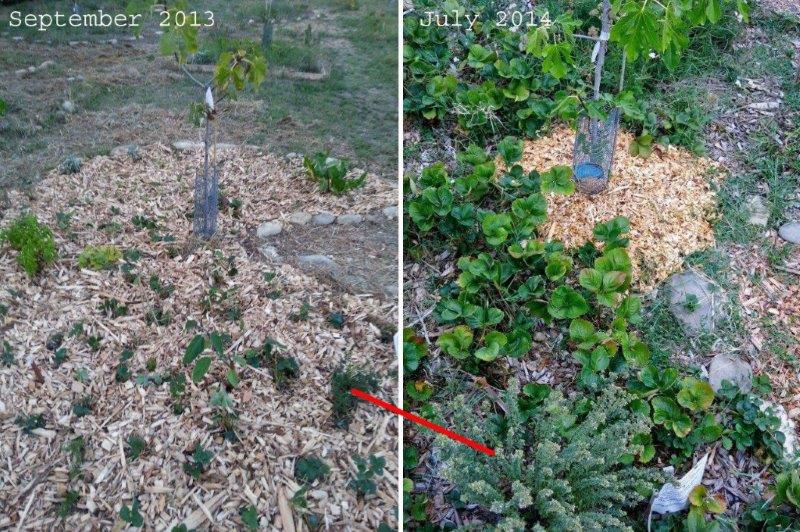
The ground cover function is performed by many of the plants included in the previous herbaceous layer although some have better performance than other in such function.
Some experiments failed (Rubus nepalensis, Rubus pentalobus, Cornus canadensis).
In the photo the development of the ground cover around a young fig tree can be seen. Some strawberry plants were planted around the tree in September at the distance of 40cm one from the other, mulched with wood chips, and in the following spring they had well covered the area and also provided a good harvest of fruits.
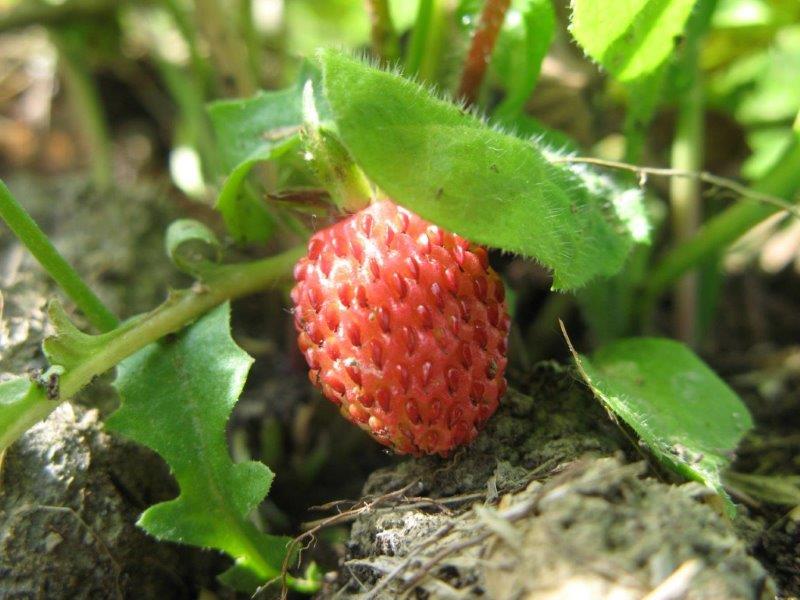

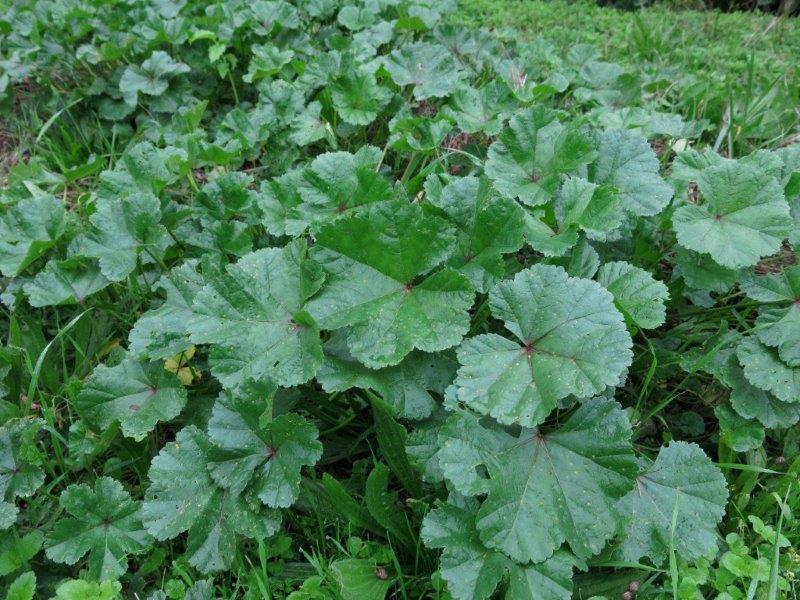
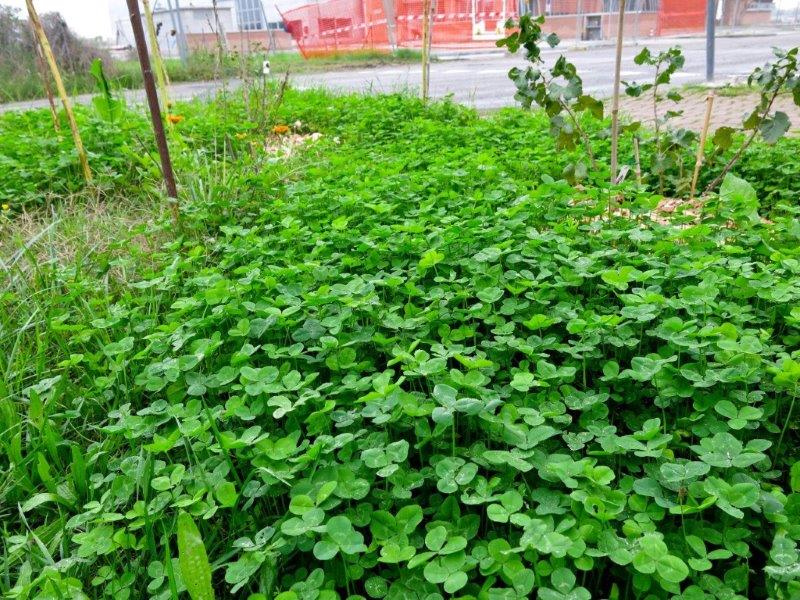
From left to right: 1) Strawberry, 2) Oregano, 3) Mallow, 4) Clover
Many plants develop underground roots, tubers and bulbs that are edible (or not edible). Many also contribute to improve the soil structure and reduce compaction. In the Picasso Food Forest this layer is currently populated by garlic, onions, potatoes, sweet potatoes, topinambur, horseradish, burdock, chicory, valerian and Chinese yam.
In this layer we wish to include the mushrooms that with their underground hyphae, mycelium and mycorrhizae perform very important functions in supporting the entire ecosystem health. They are involved in the decomposition of the organic matter (the only organisms that can decompose lignin!) and in the transport and distribution of essential nutrients even at great distances.
The use of wood chips for mulching in the Picasso Food Forest allows the establishment of this active and vital layer from which many plants seem taking great benefit. We will soon provide additional information on this essential subject.
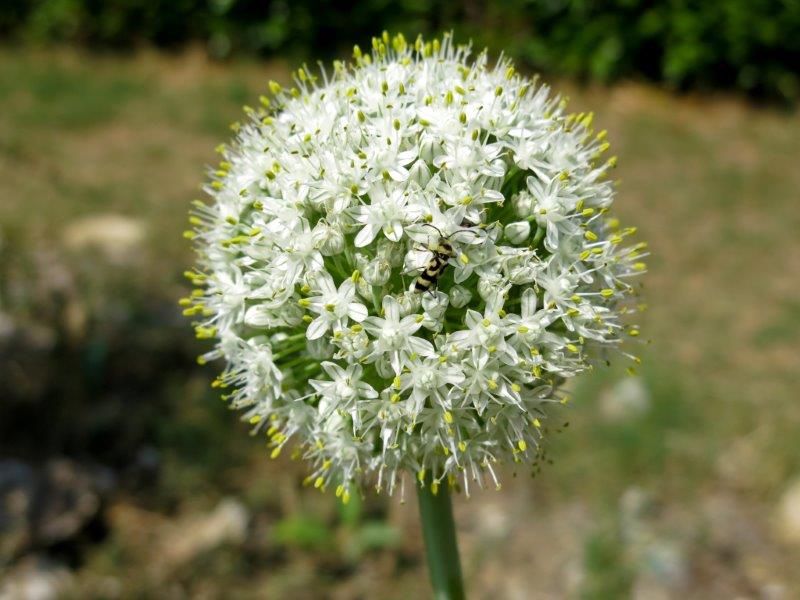
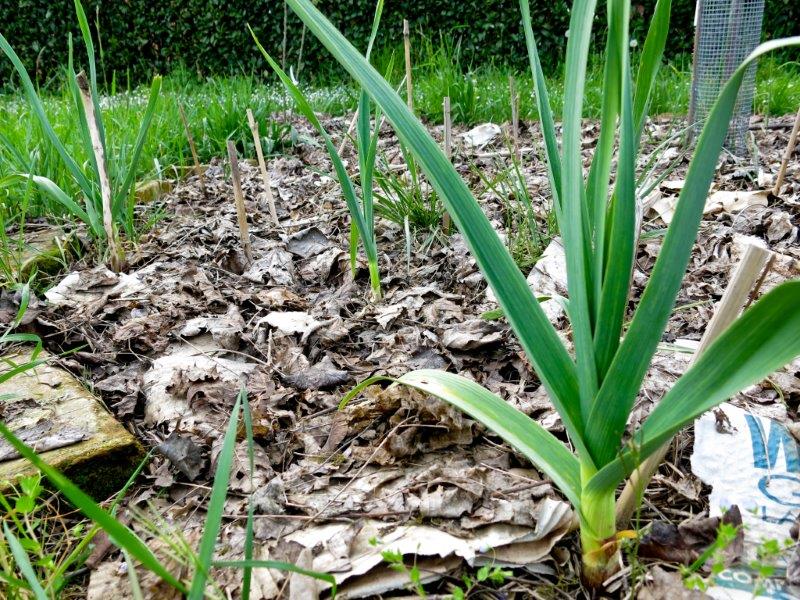

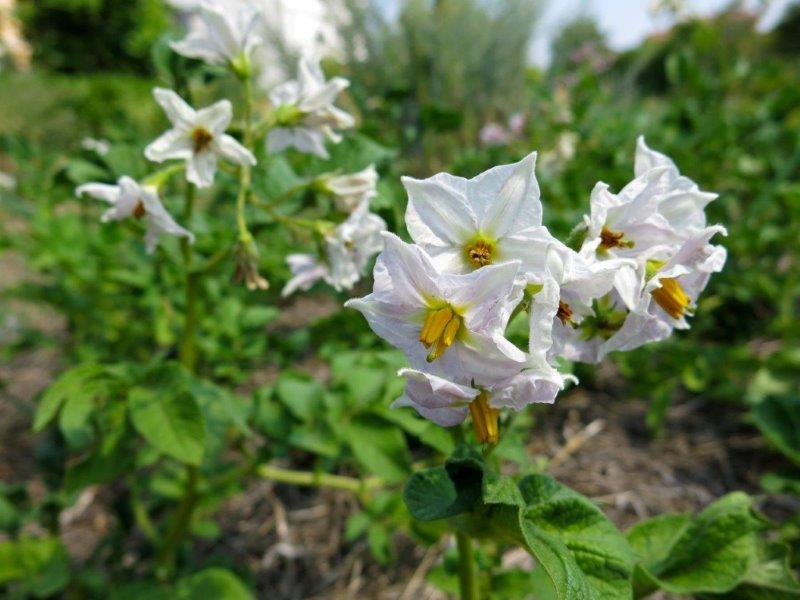
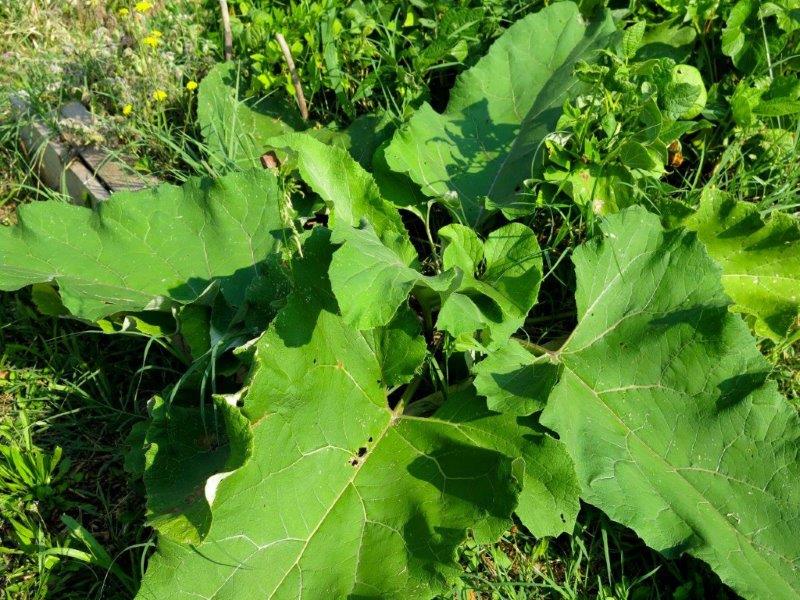

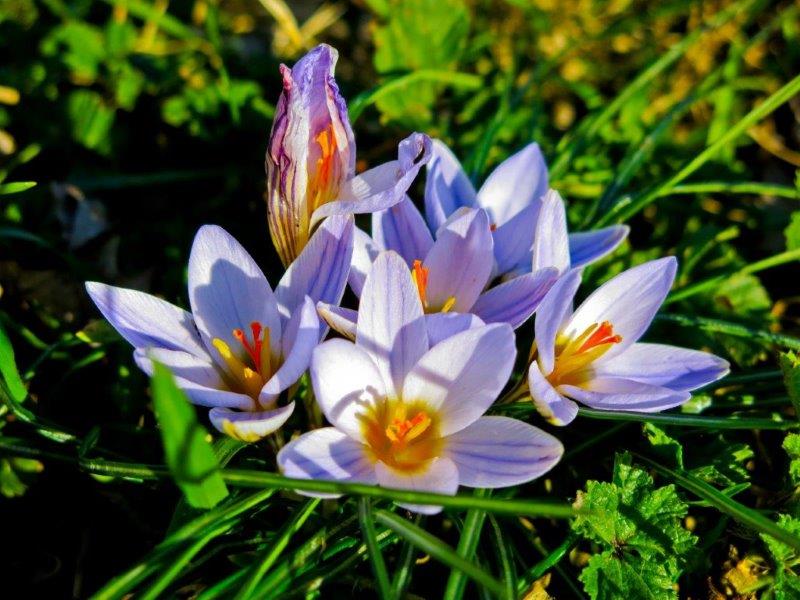
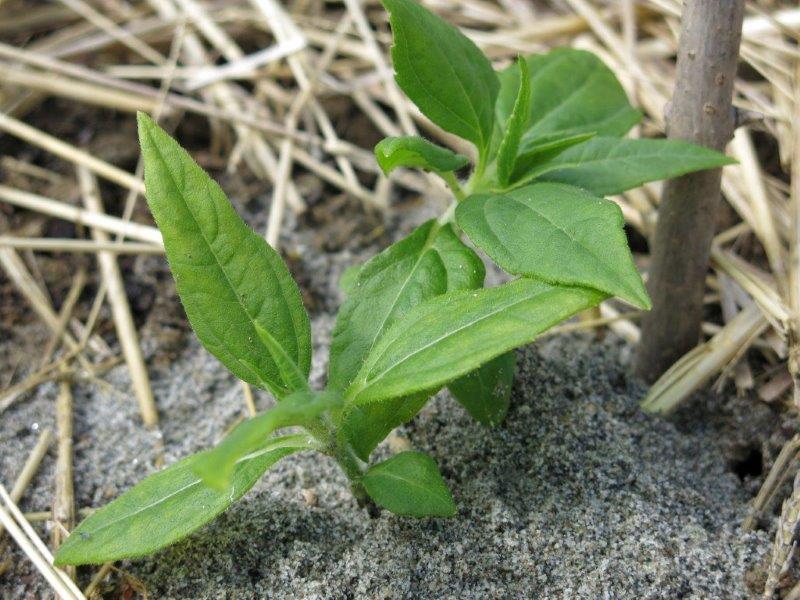
From left to right: 1) Garlic flower, 2) Garlic plants around fruit trees, 3) Mushrooms on wood chips, 4) Potato flowers, 5) Greater burdock (Arctium lappa), 6) Horseradish (Armoracia rusticana), 7) Crocus flowers, 8) Topinambur (Helianthus tuberosus)
This layer allows to add productivity to existing layers and it occupies different heights. Plants in this layer climb over natural or artificial supports by mean of twining their stems or of tendrils. Plants in this layer in the Picasso Food Forest include hop, grape, kiwi, cinnamon vine, plants belonging to the Cucurbitaceae family (cucumbers, squash) and running beans.
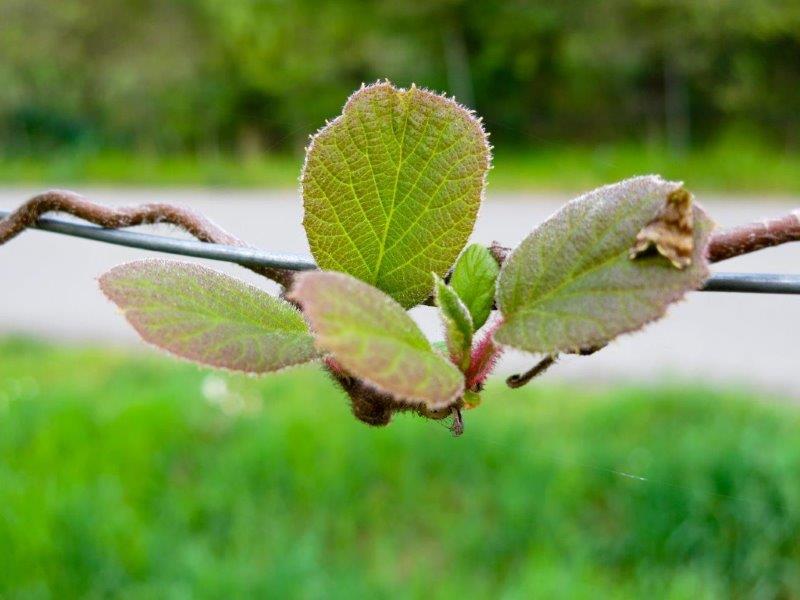
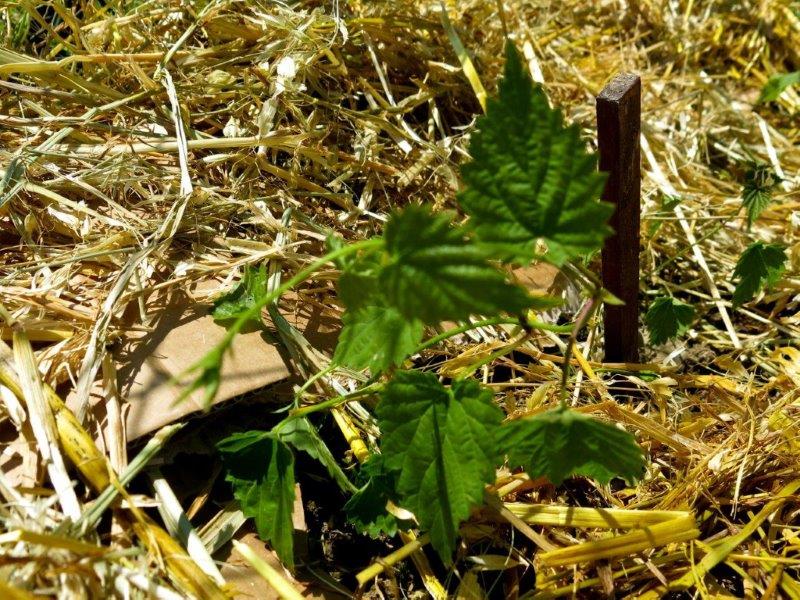
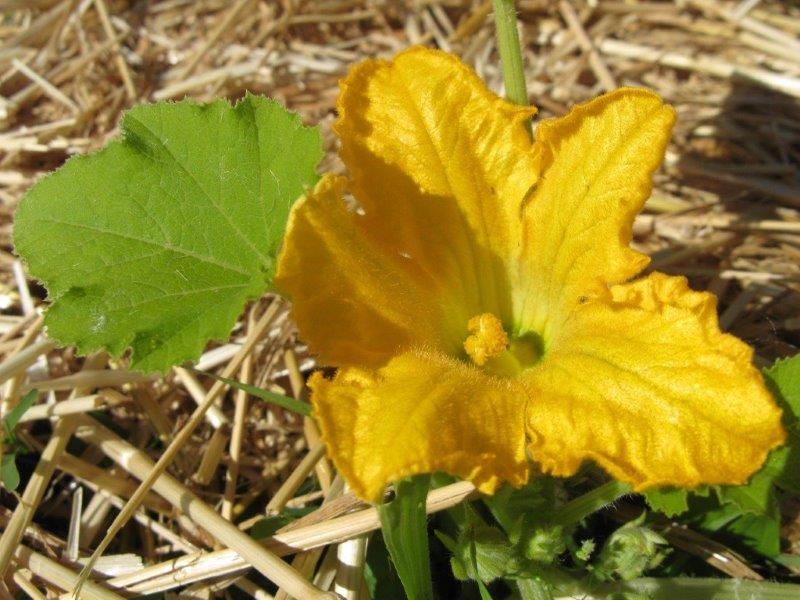
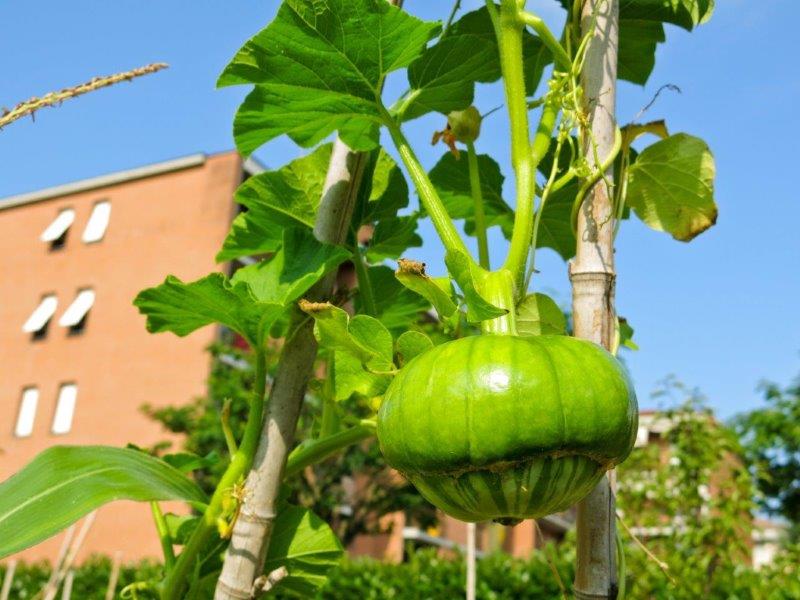
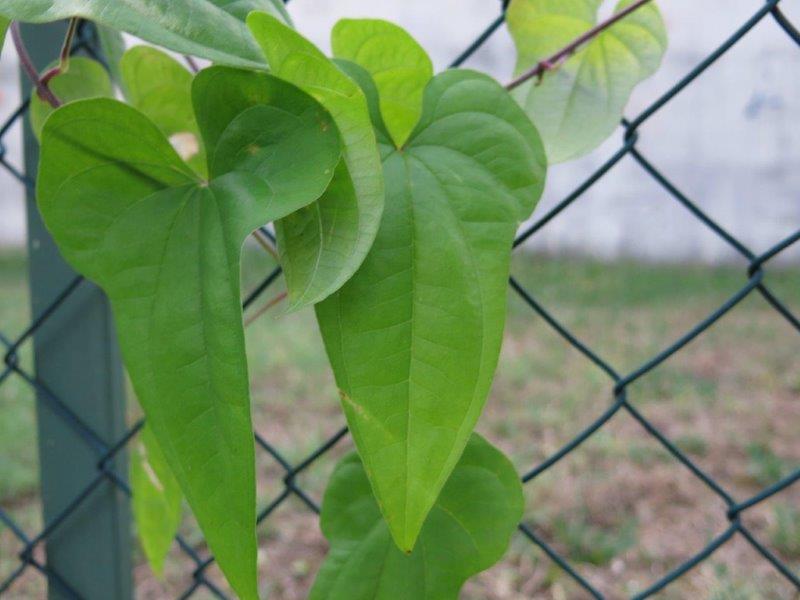
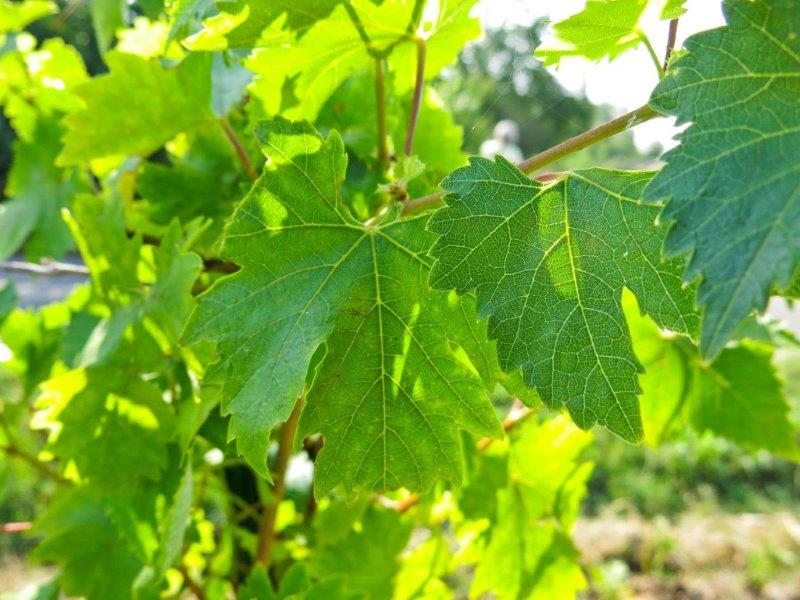
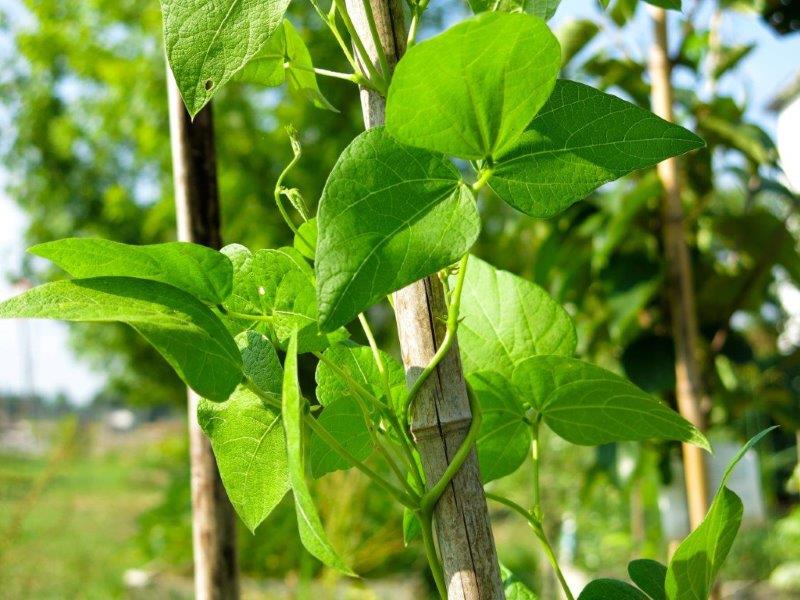
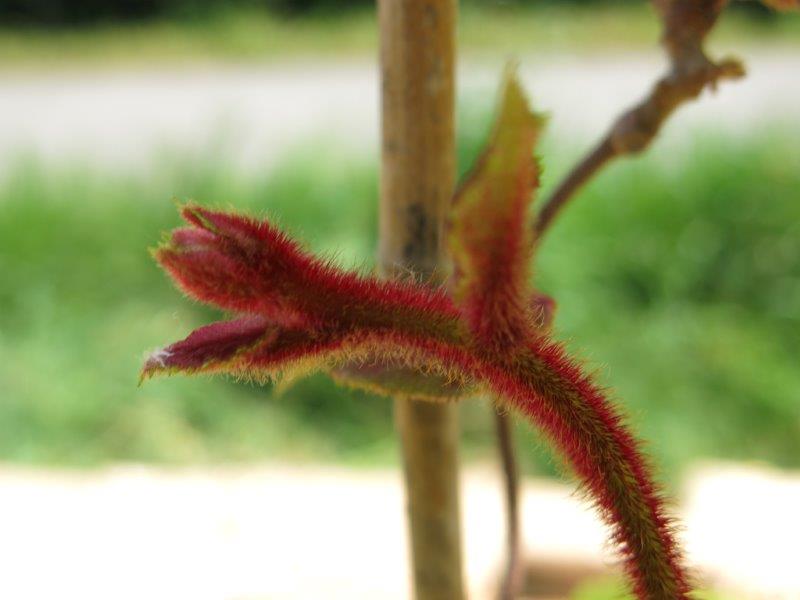
From left to right: Kiwi plant (Actinidia deliziosa), 2) Hop (Humulus Lupulus), 3) Squash flower, 4) Squash, 5) Chinese Yam (Dioscorea batatas), 6) Grape (Vitis vinifera), 7) Running bean, 8) Kiwi young sprout
Biodiversity and list of species in the Picasso Food Forest
We have so far censused over 300 different plant species.
The complete list can be downloaded in Excel at the following link:
There is a dedicated page to the flora and fauna biodiversity of the food forest showcasing a photo gallery here:
The Picasso Food Forest Biodiversity
It is possible to contribute to the biodiversity census by taking part to the citizen science monitoring program. Click here for more information.
Detailed map
Here an interactive map with the 120 species and varieties (311 individual plants!) of wooden plants (fruit trees and shrubs) and climbers of the Picasso Food Forest updated to March 2021:
Raised beds and other experiments
Ten raised beds were built during the winter 2014. View all the details about our trials on the dedicated page!
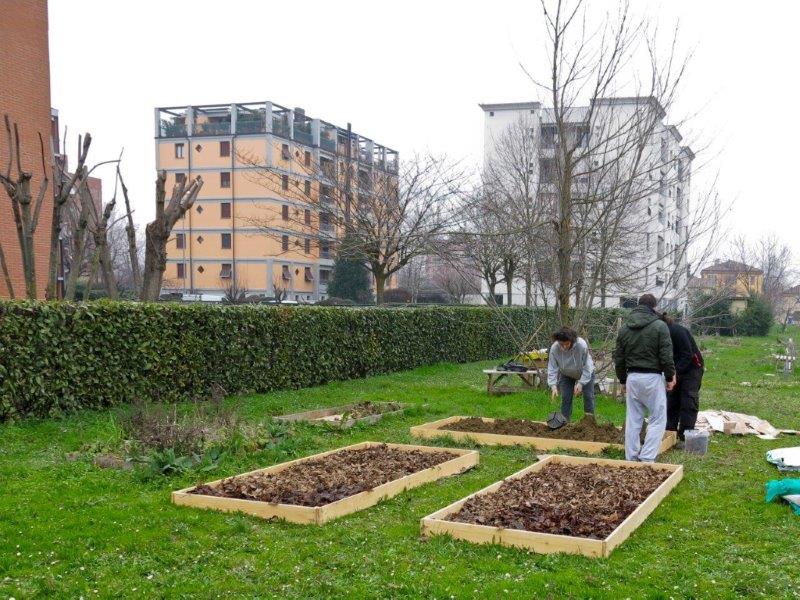
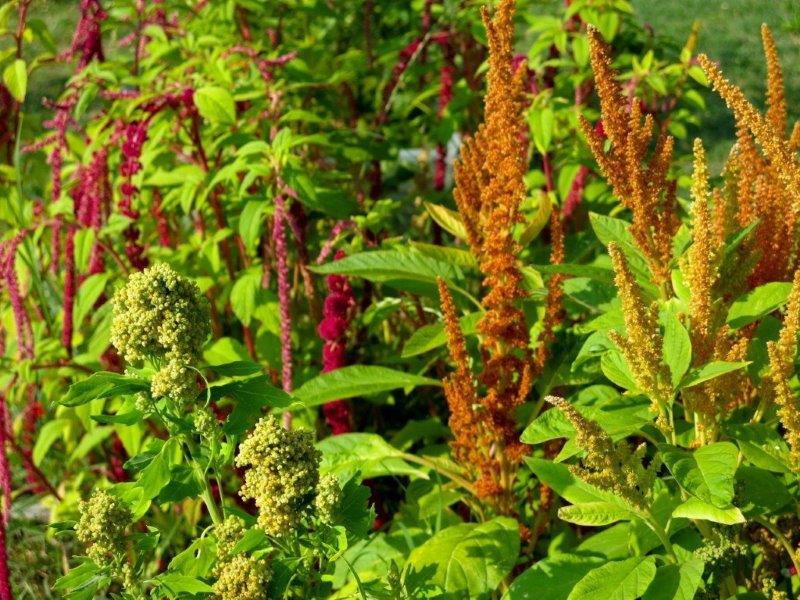
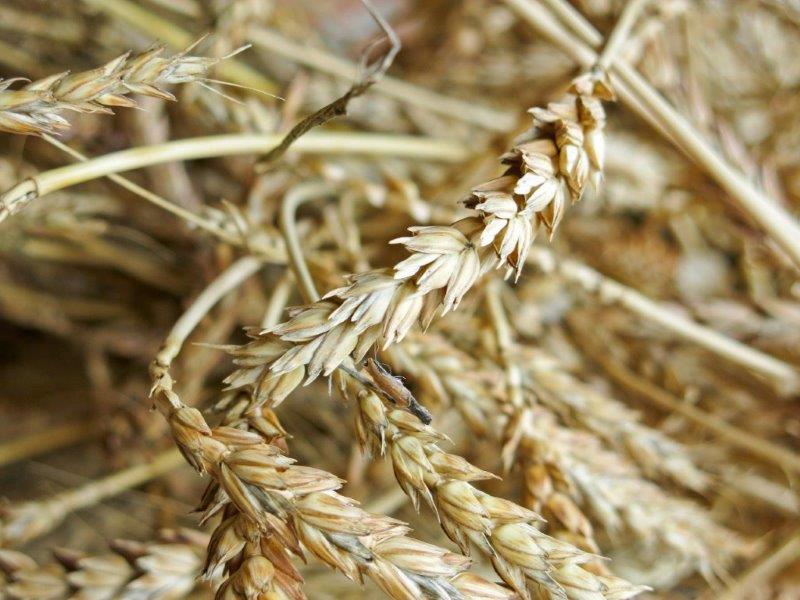
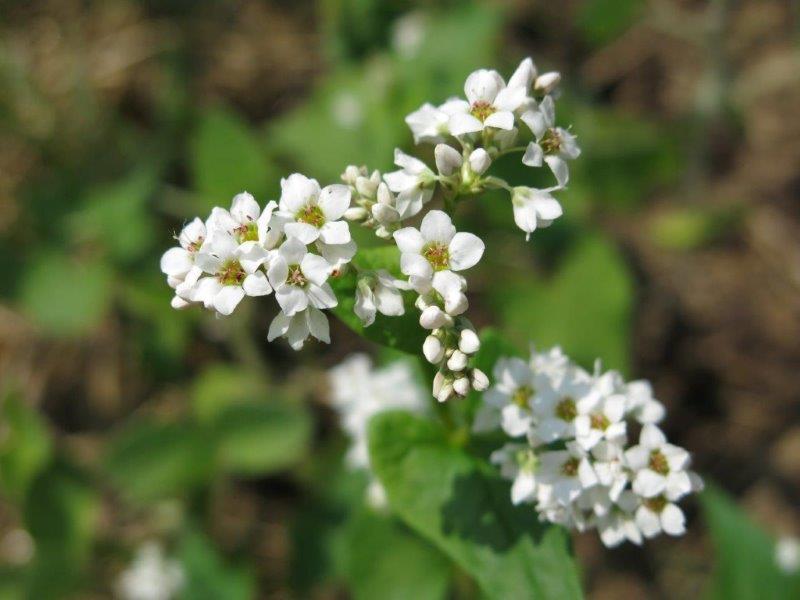

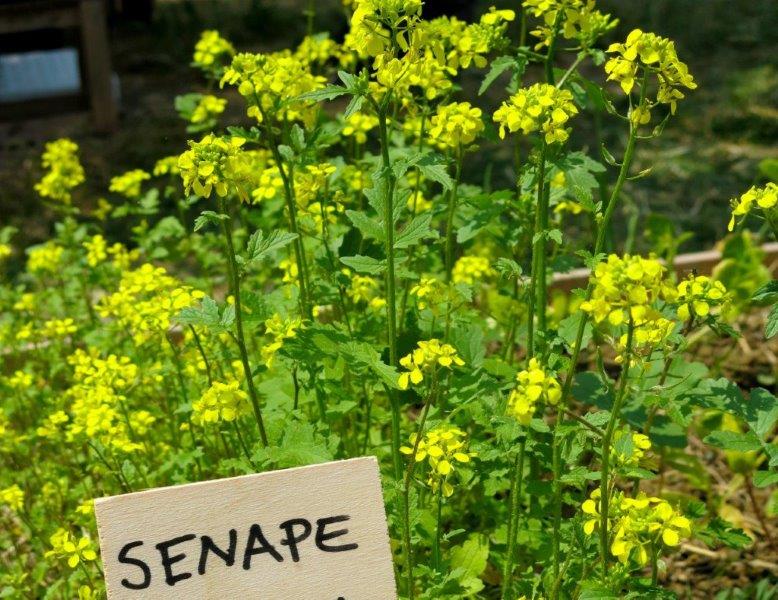
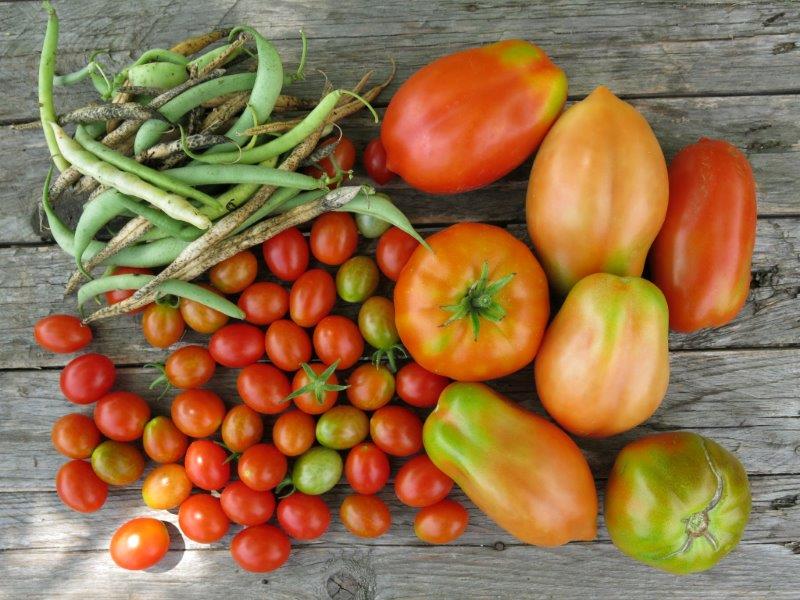

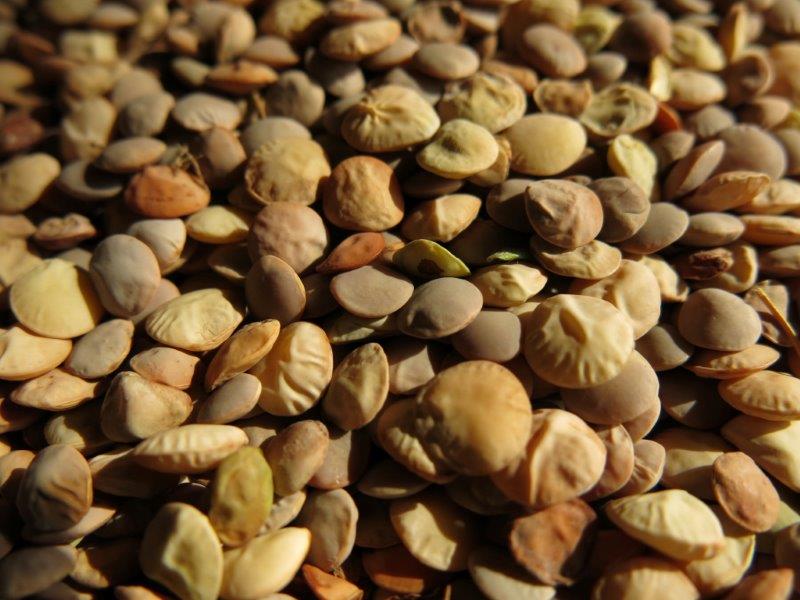
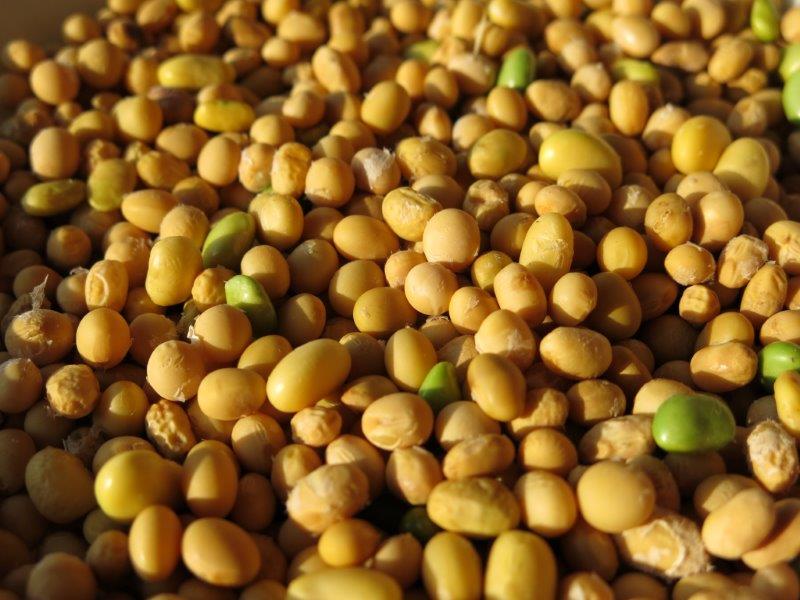
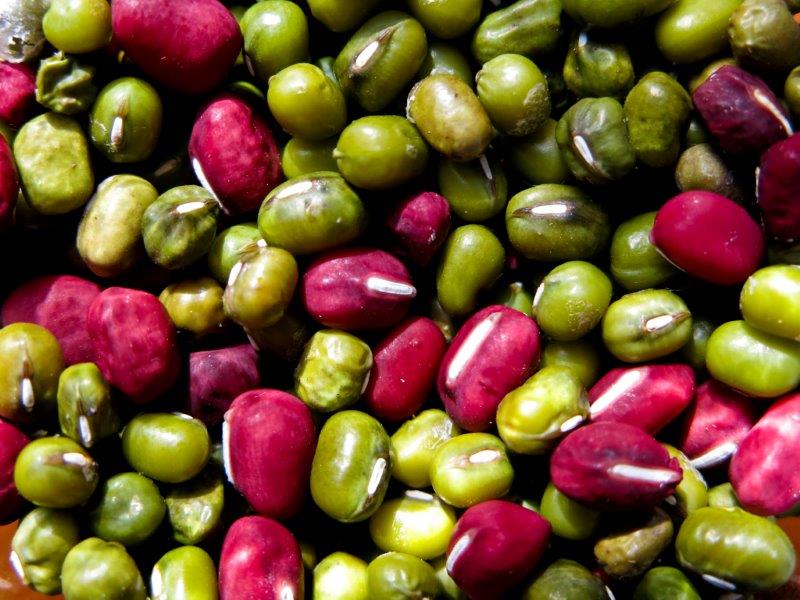
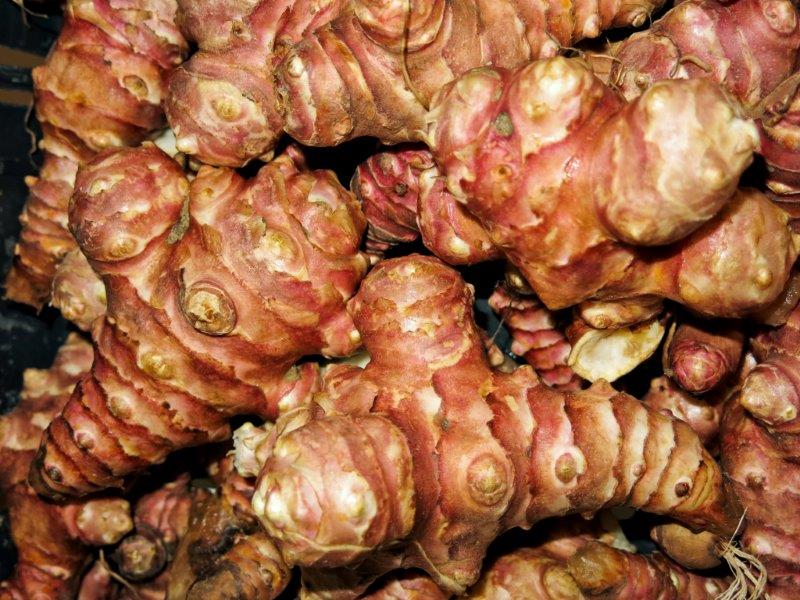
Publications and bibliography
In 2019 the renowned journal Urban Forestry and Urban Greening has published a special edition entirely dedicated to urban food forests. This edition included an article anbout the Picasso Food Forest, titled "The social and environmental value of public urban food forests: The case study of the Picasso Food Forest in Parma, Italy".
Here a video presentation of the article.
We suggest the following books:
- Edible Forest Gardens: 2 Volume Set (Eric Toensmeier and Dave Jacke)
- Creating a forest garden (Martin Crawford)
- Introduction to Permaculture (Bill Mollison)
- One straw revolution (Masanobu Fukuoka)
Follow us
Pictures about events and activities are also posted on our Facebook page.

